Preparation, validation and use of a vasoactive tryptophan-derived hydroperoxide and relevant control compounds
Raphael F. Queiroz, Cacang Suarna, Leo Corcilius, Genevieve E. Sergeant, Sudhir Shengule, Richard J. Payne, Anita Ayer, Roland Stocker

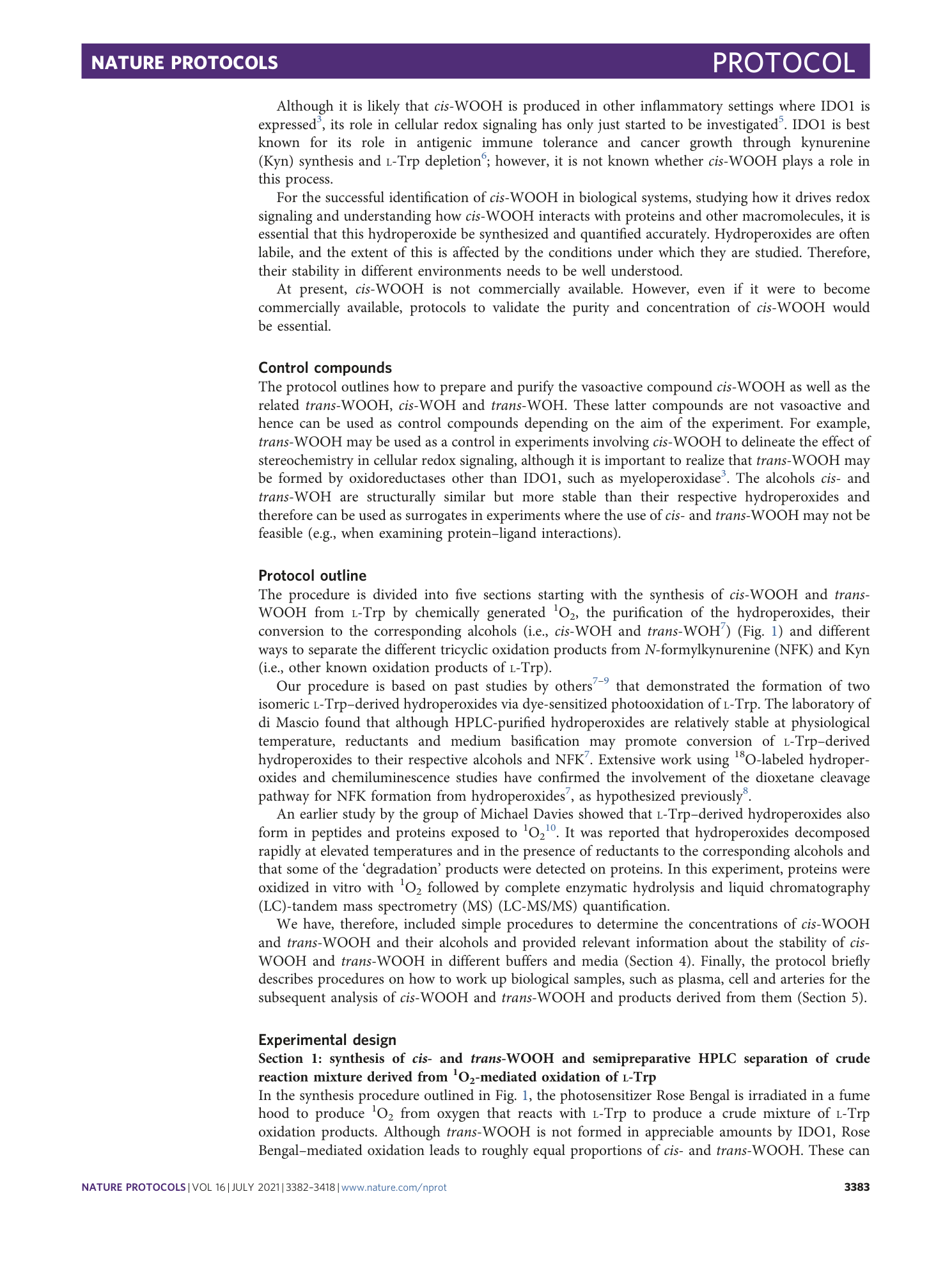
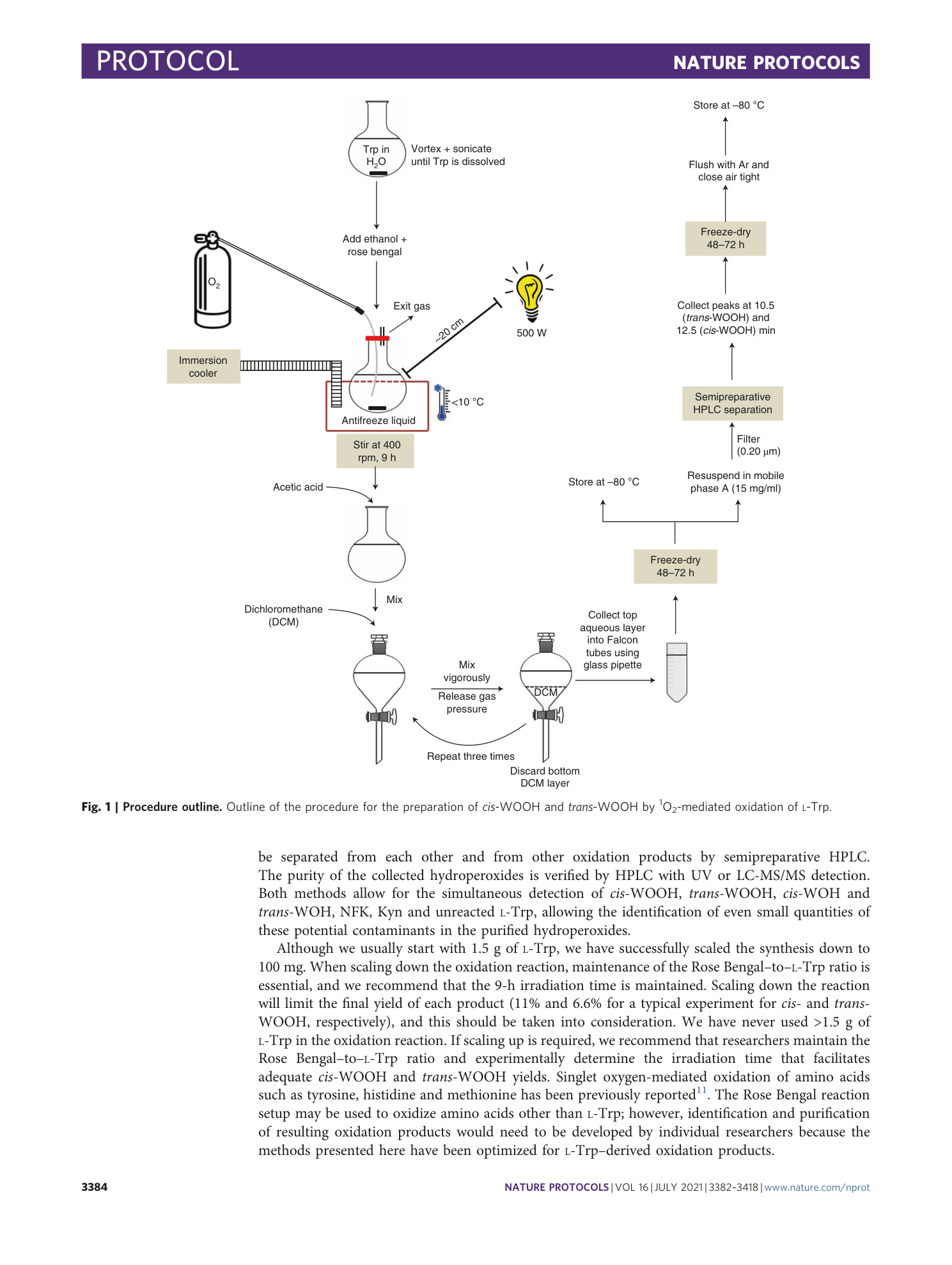
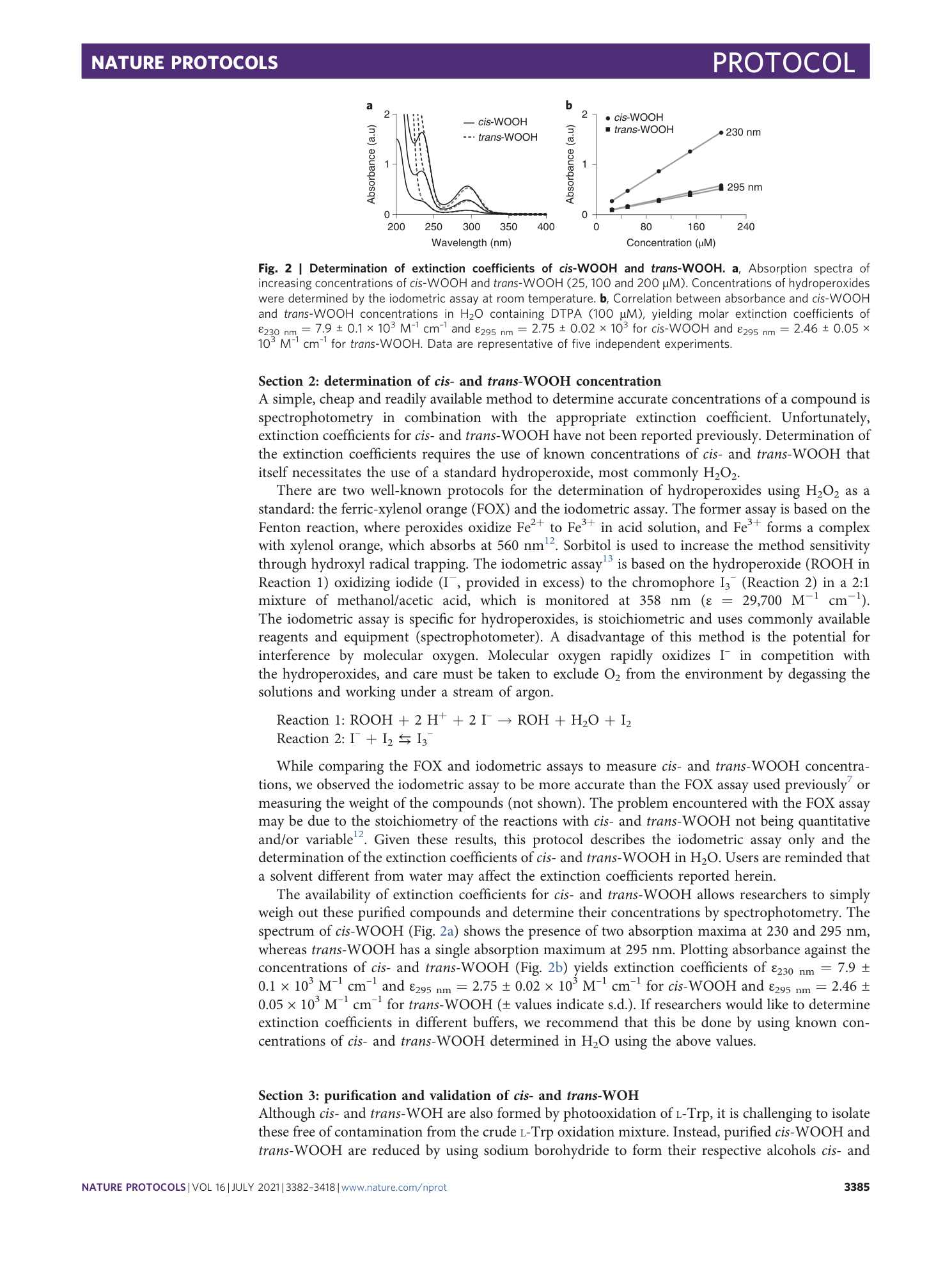
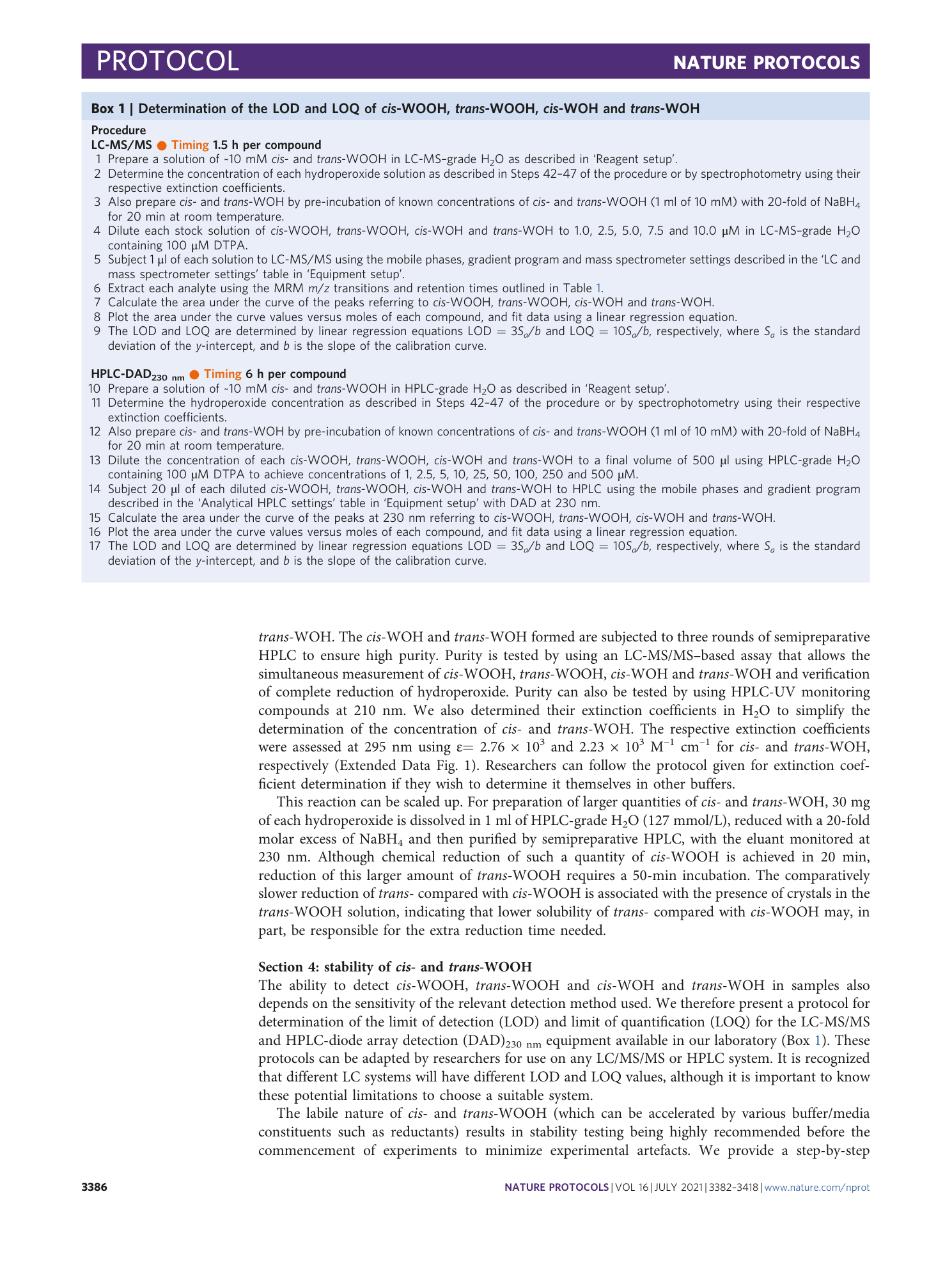

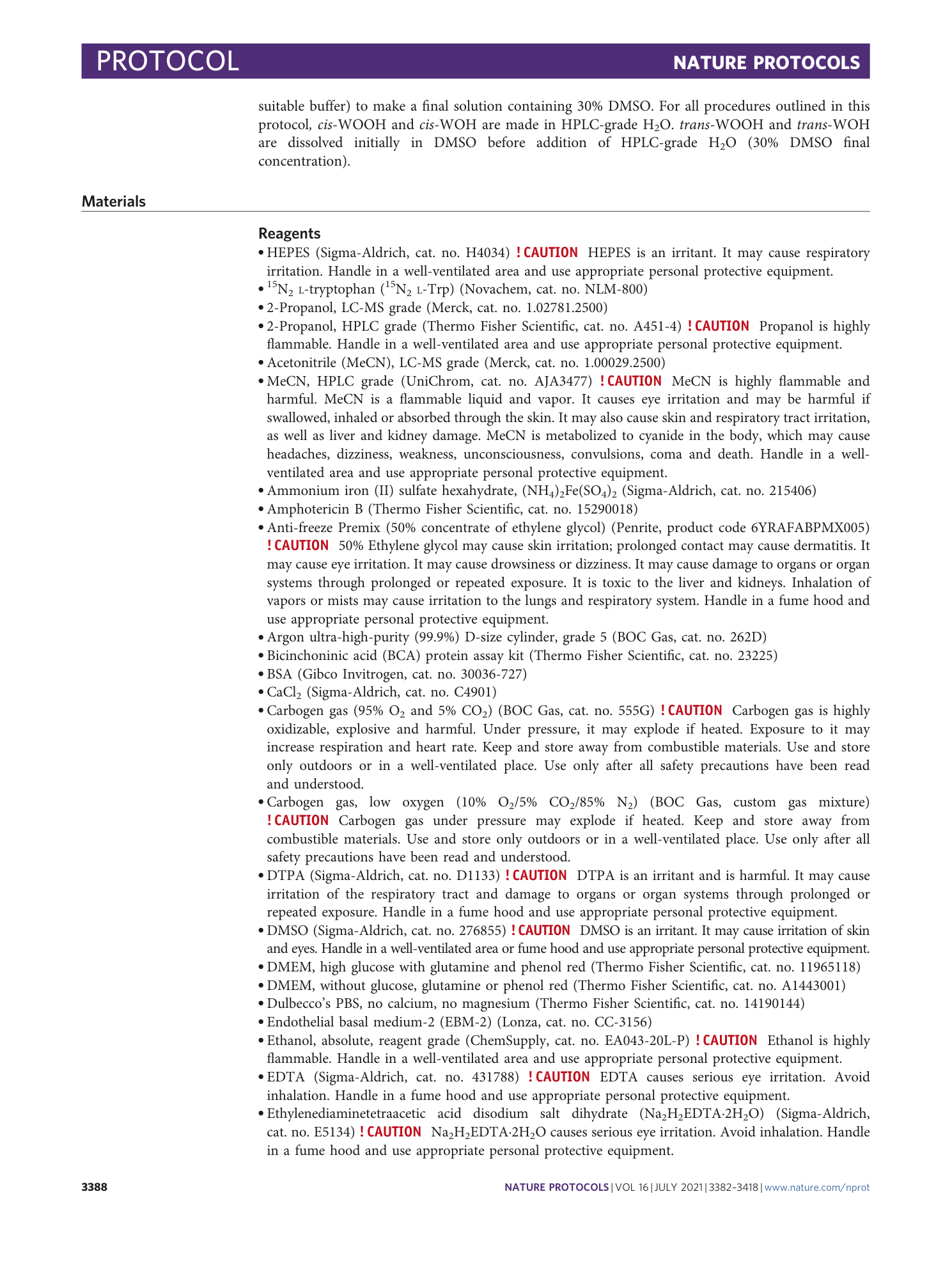
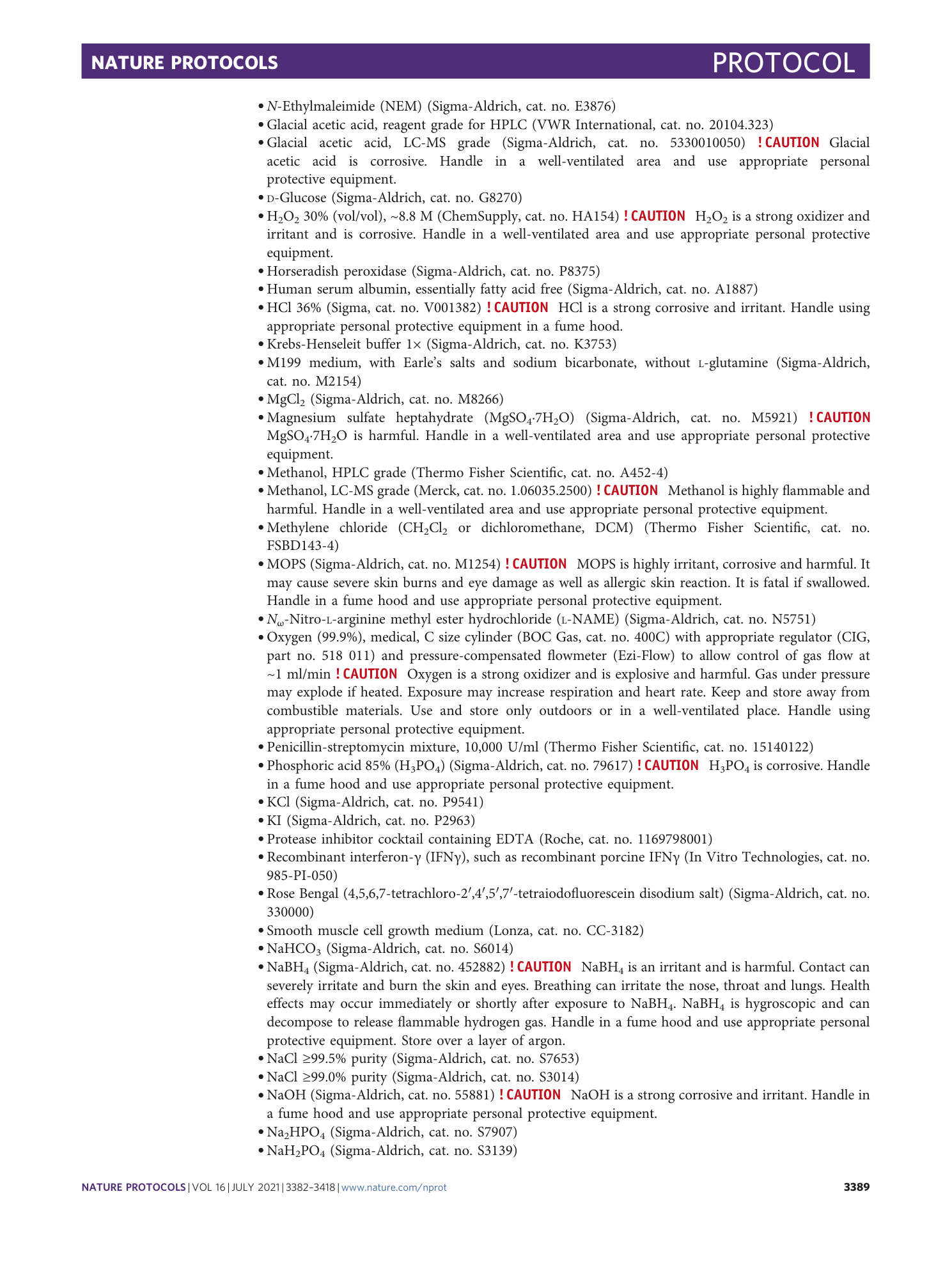
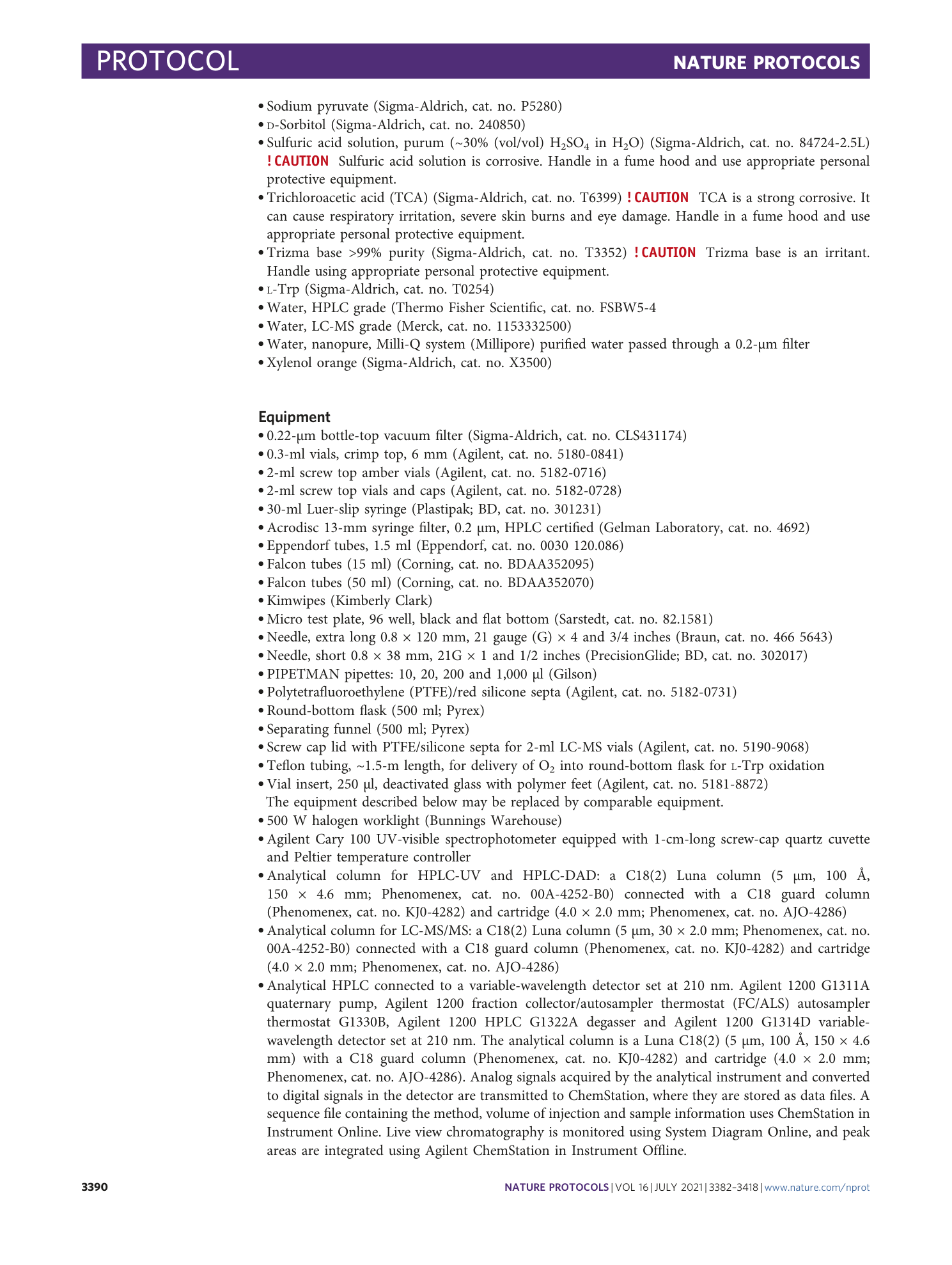
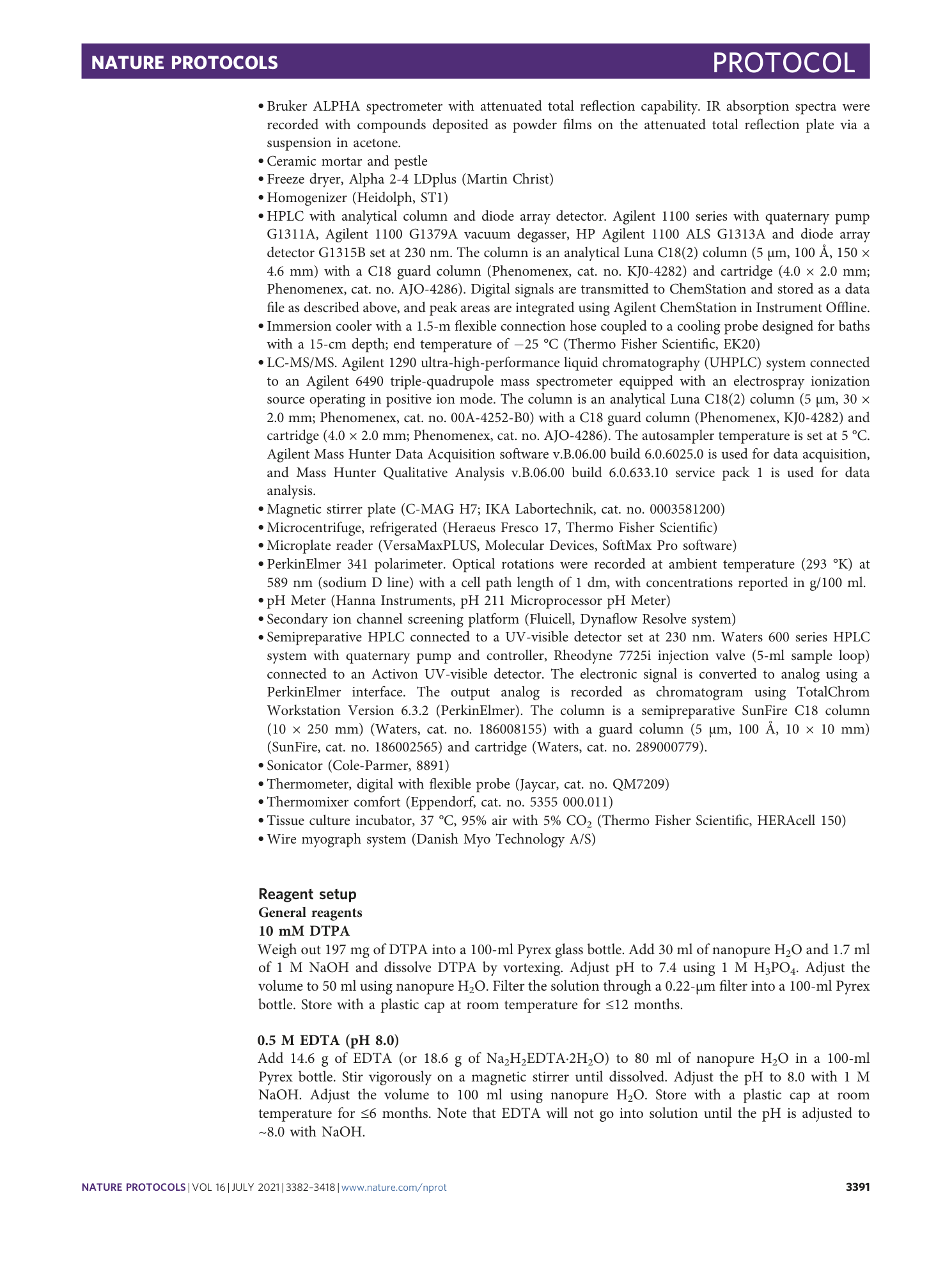
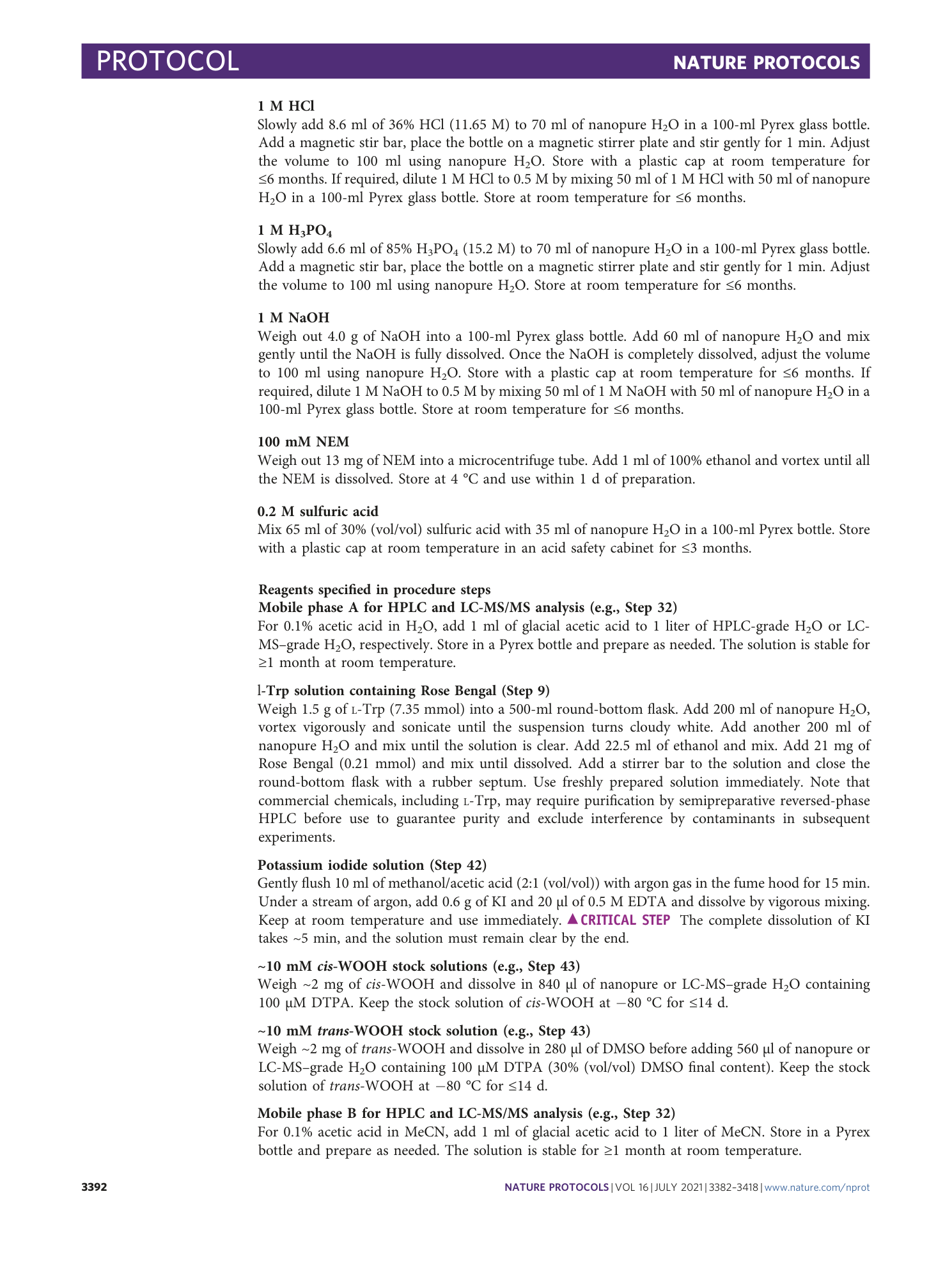

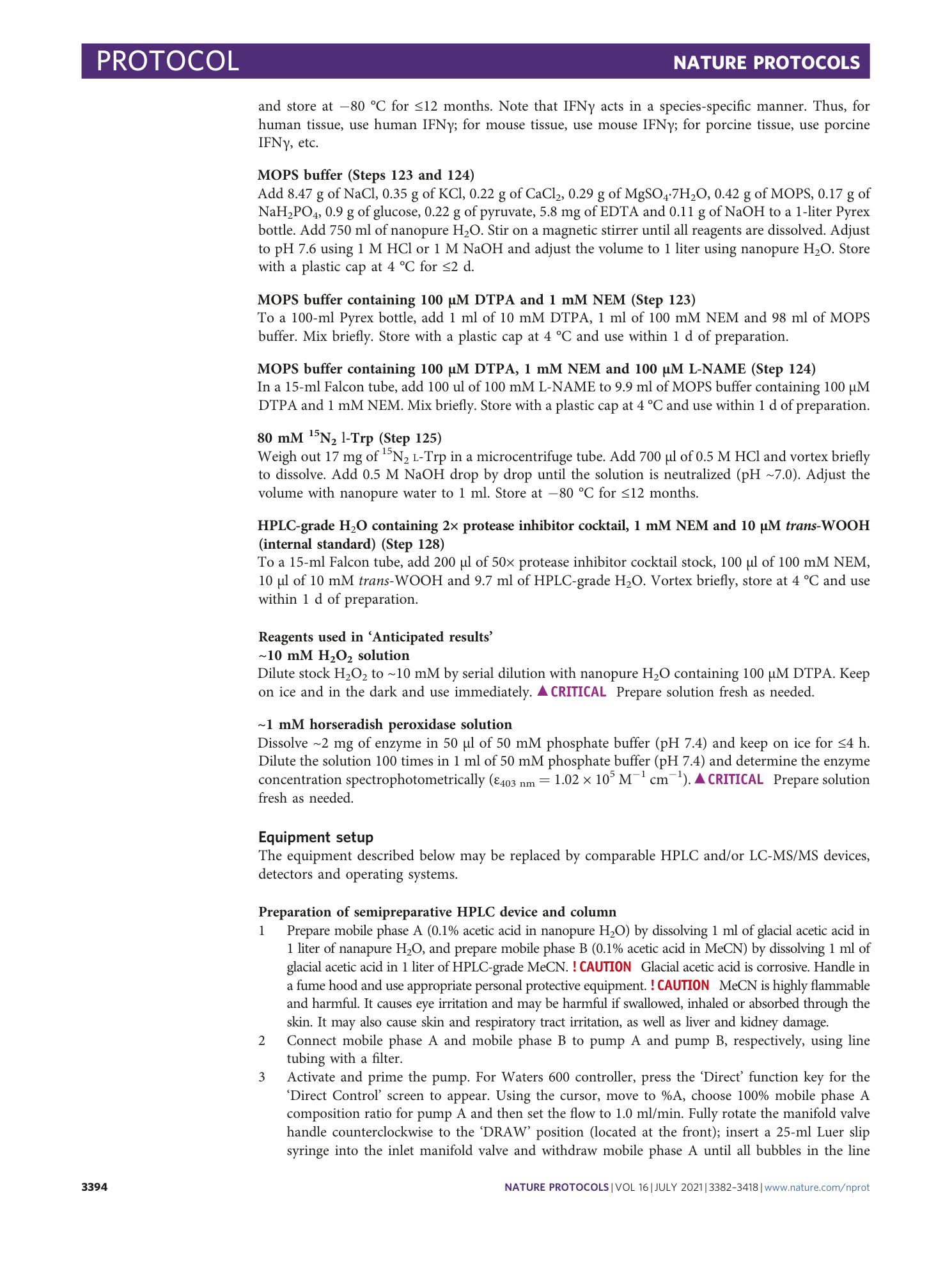
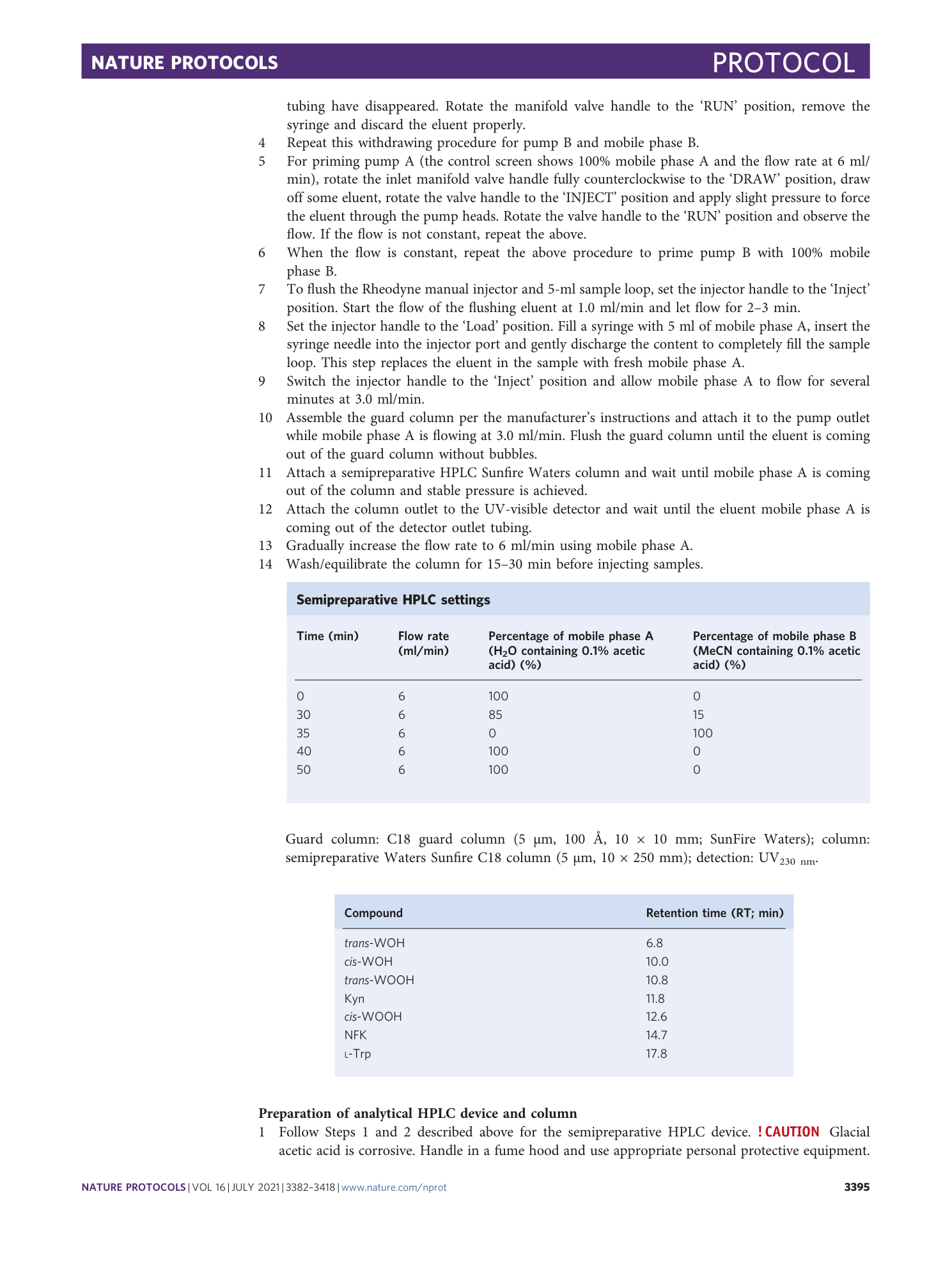
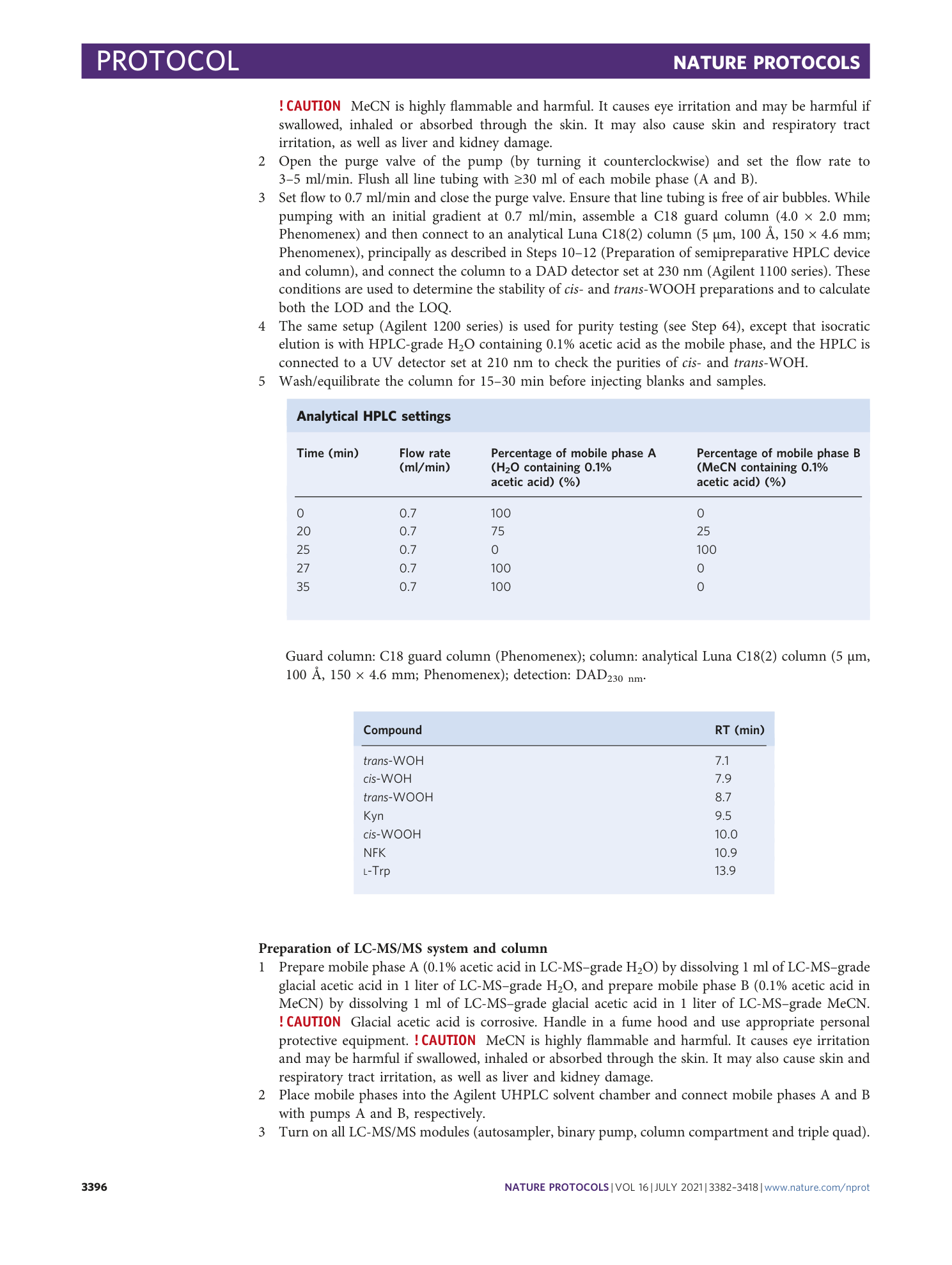
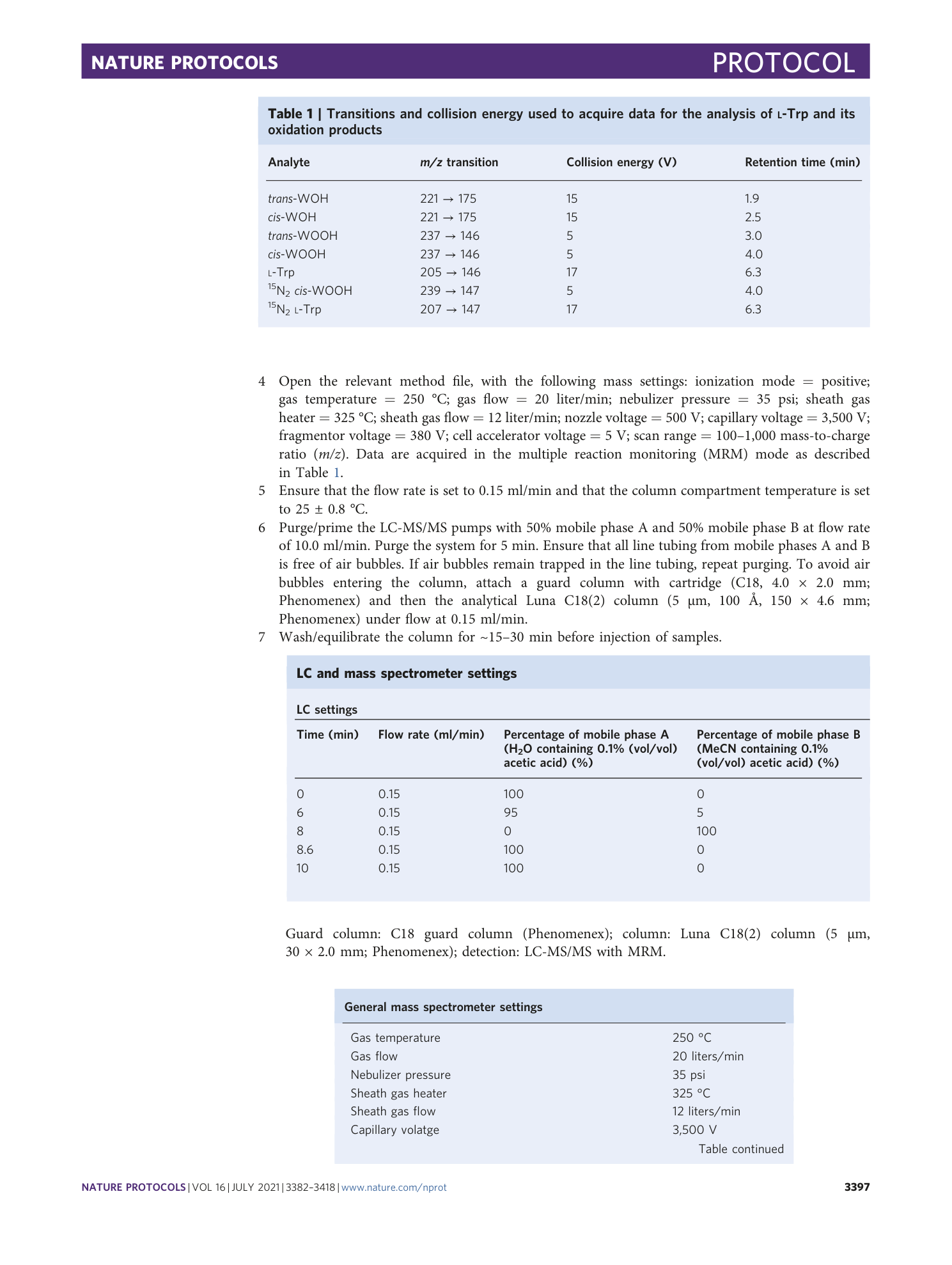
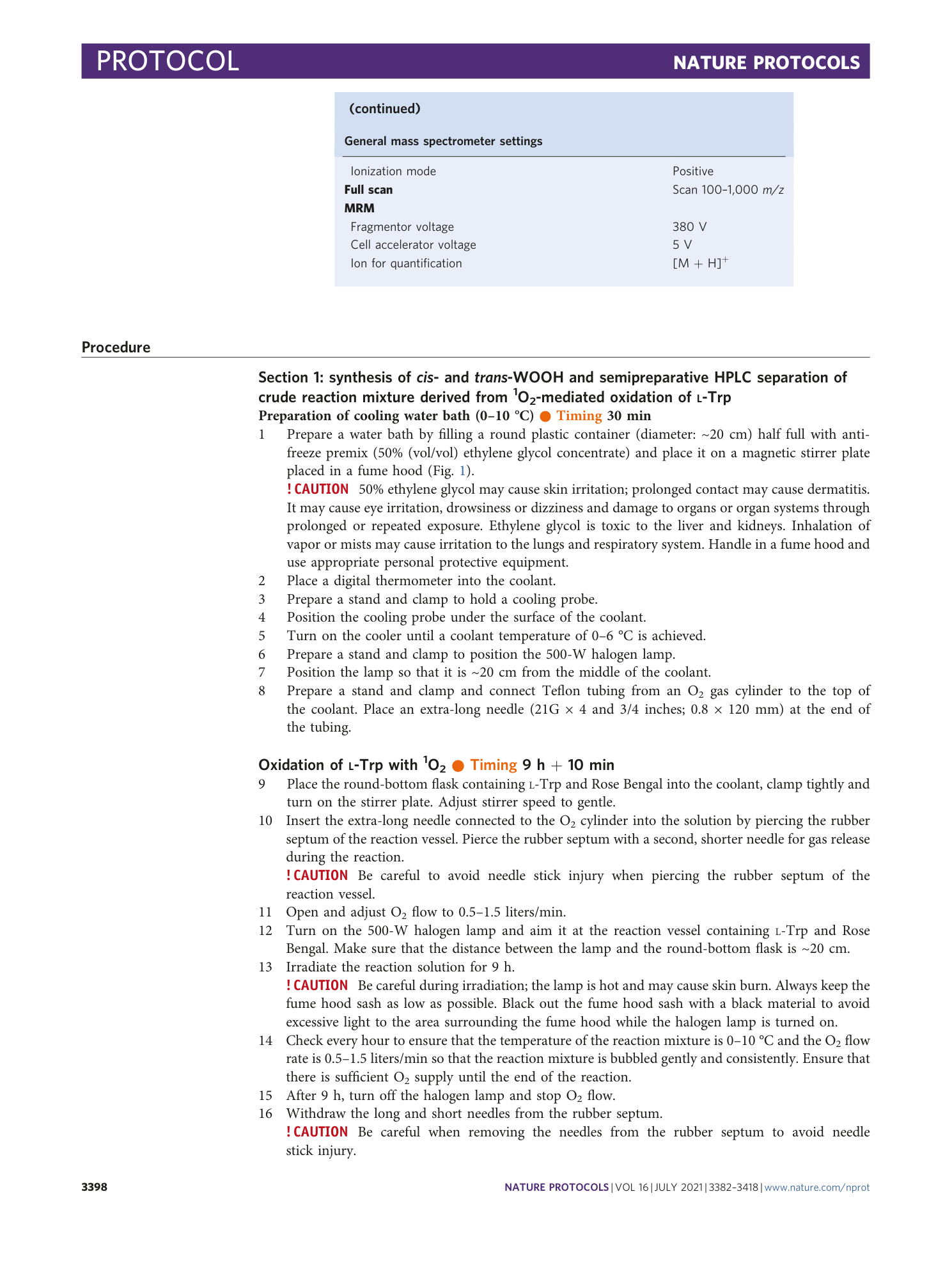
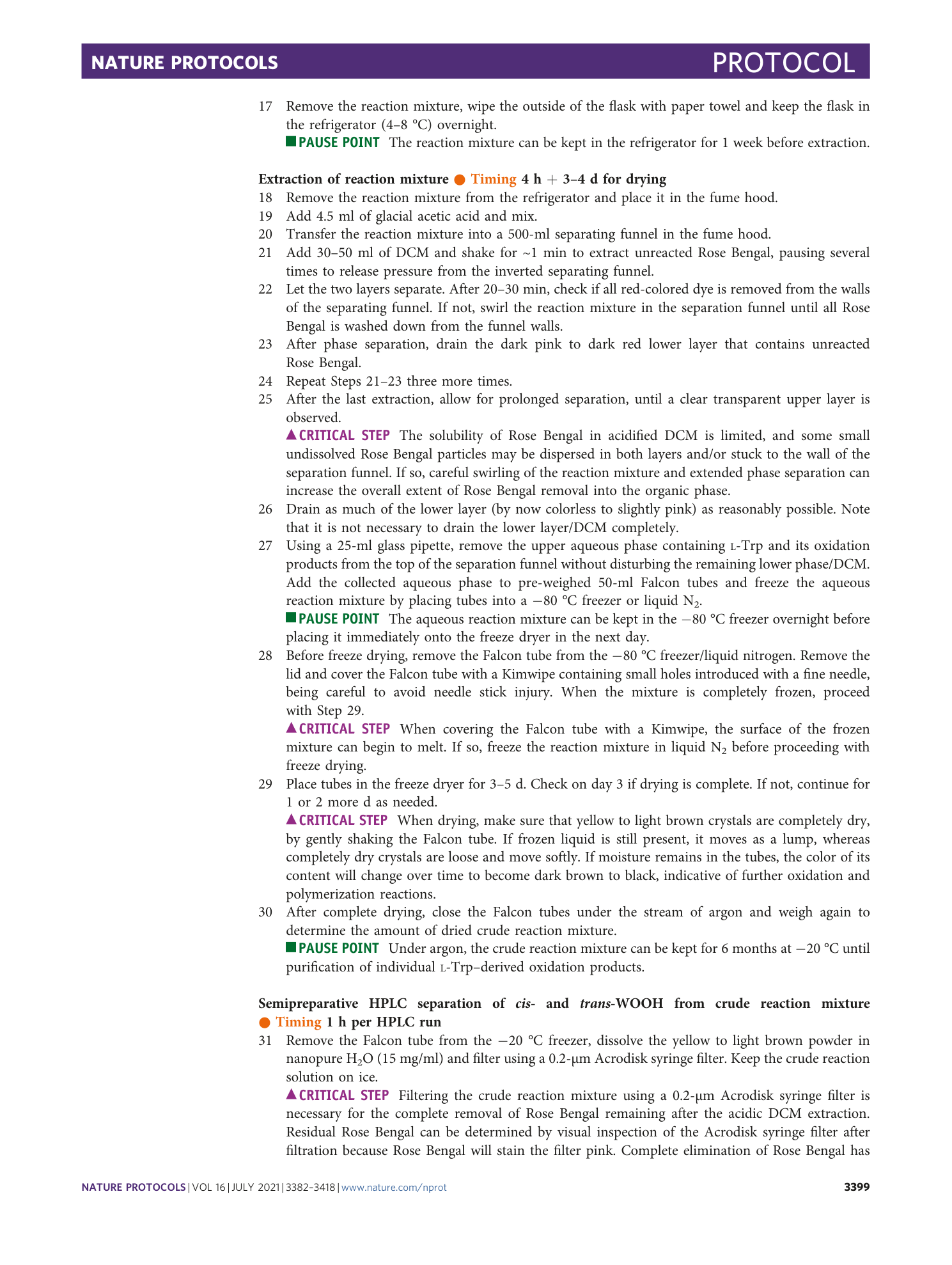
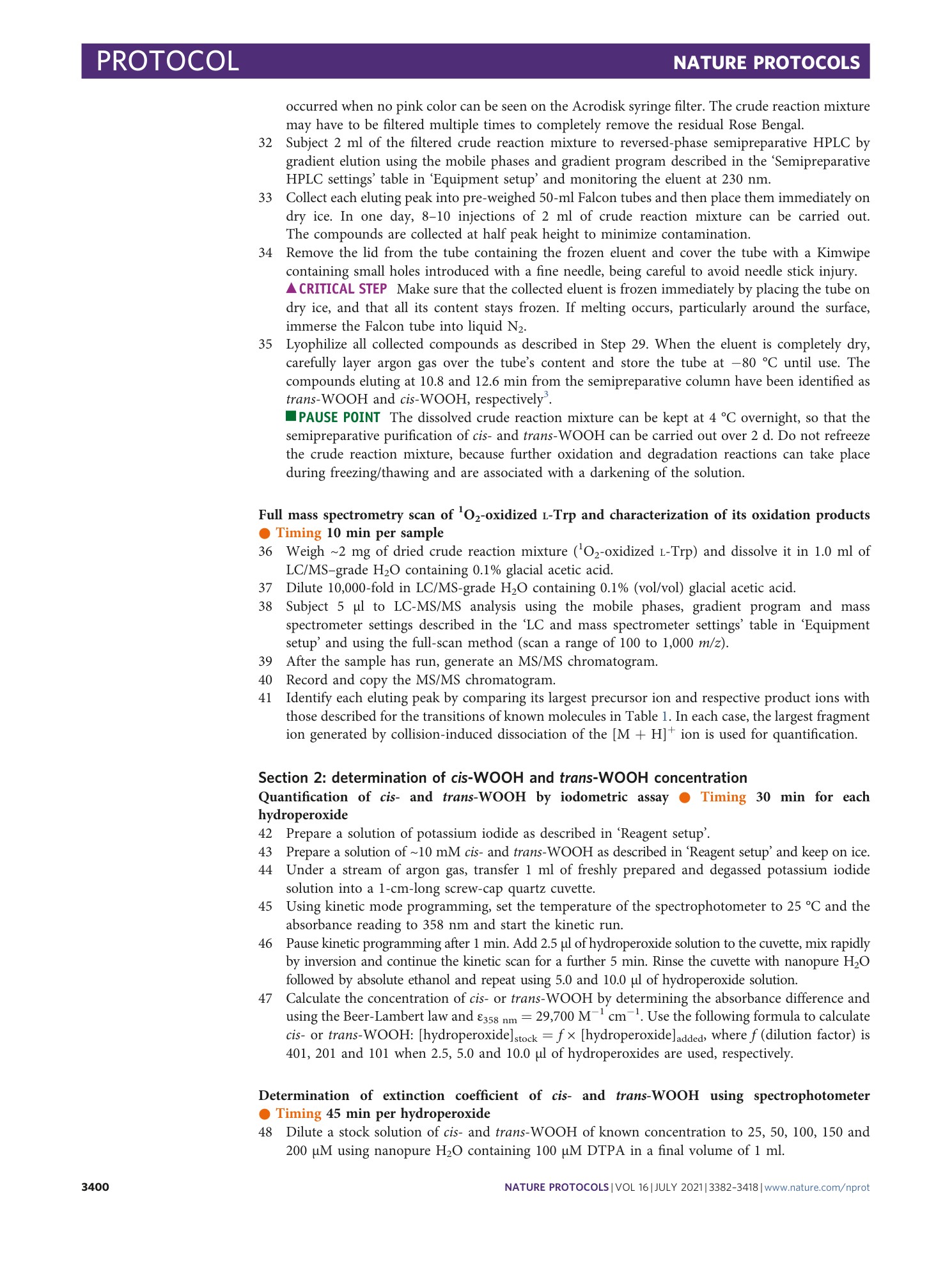
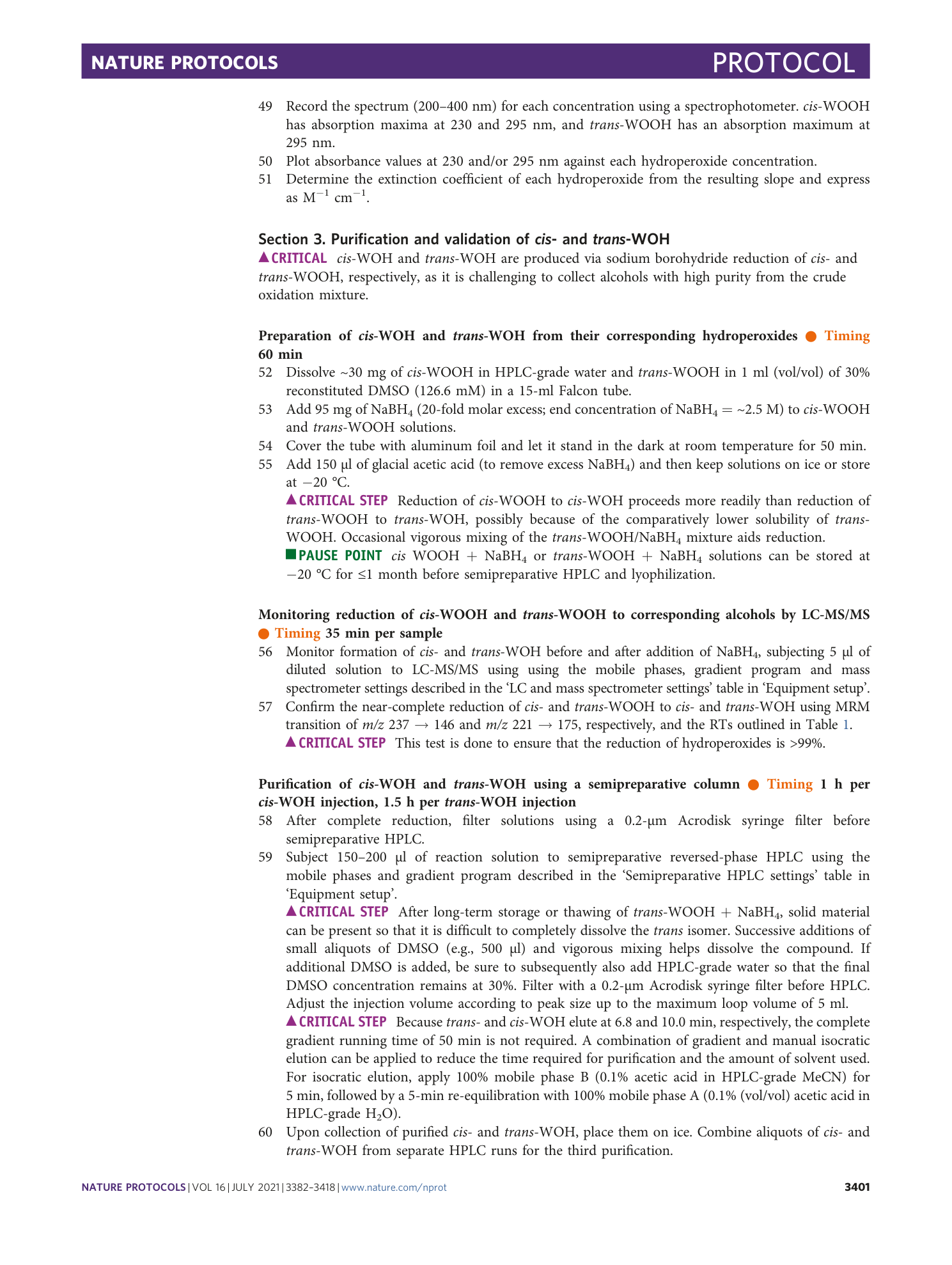

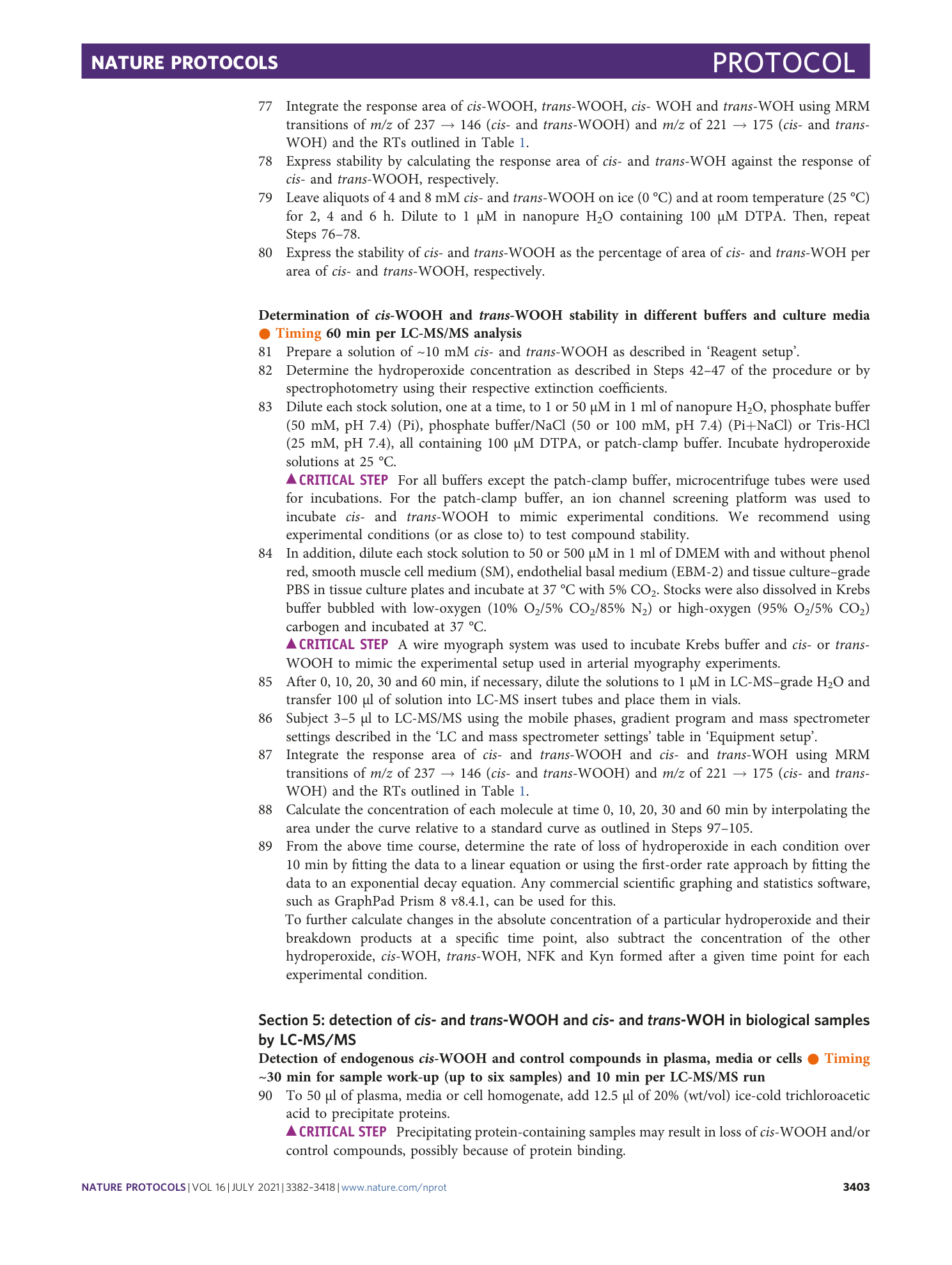
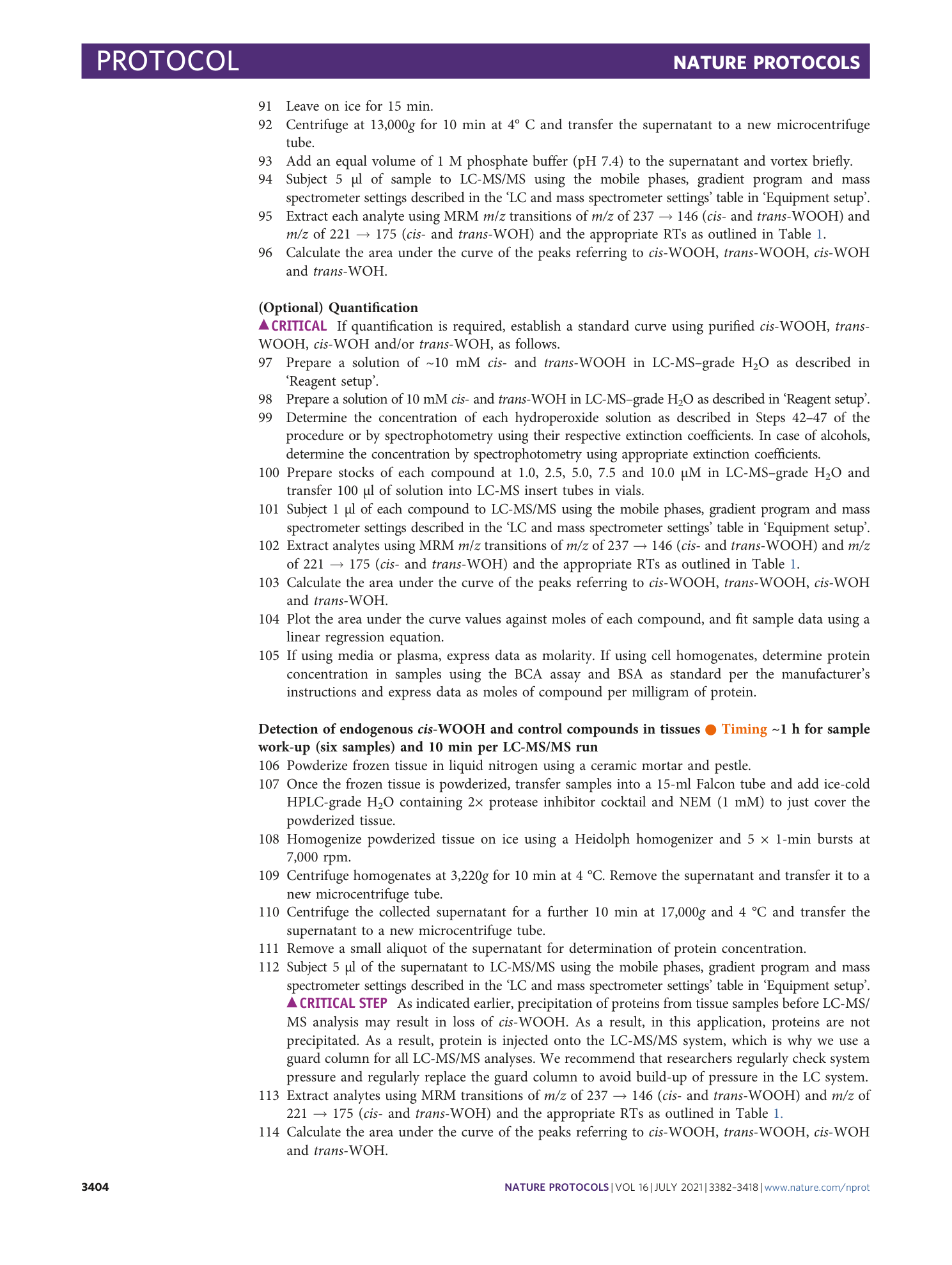
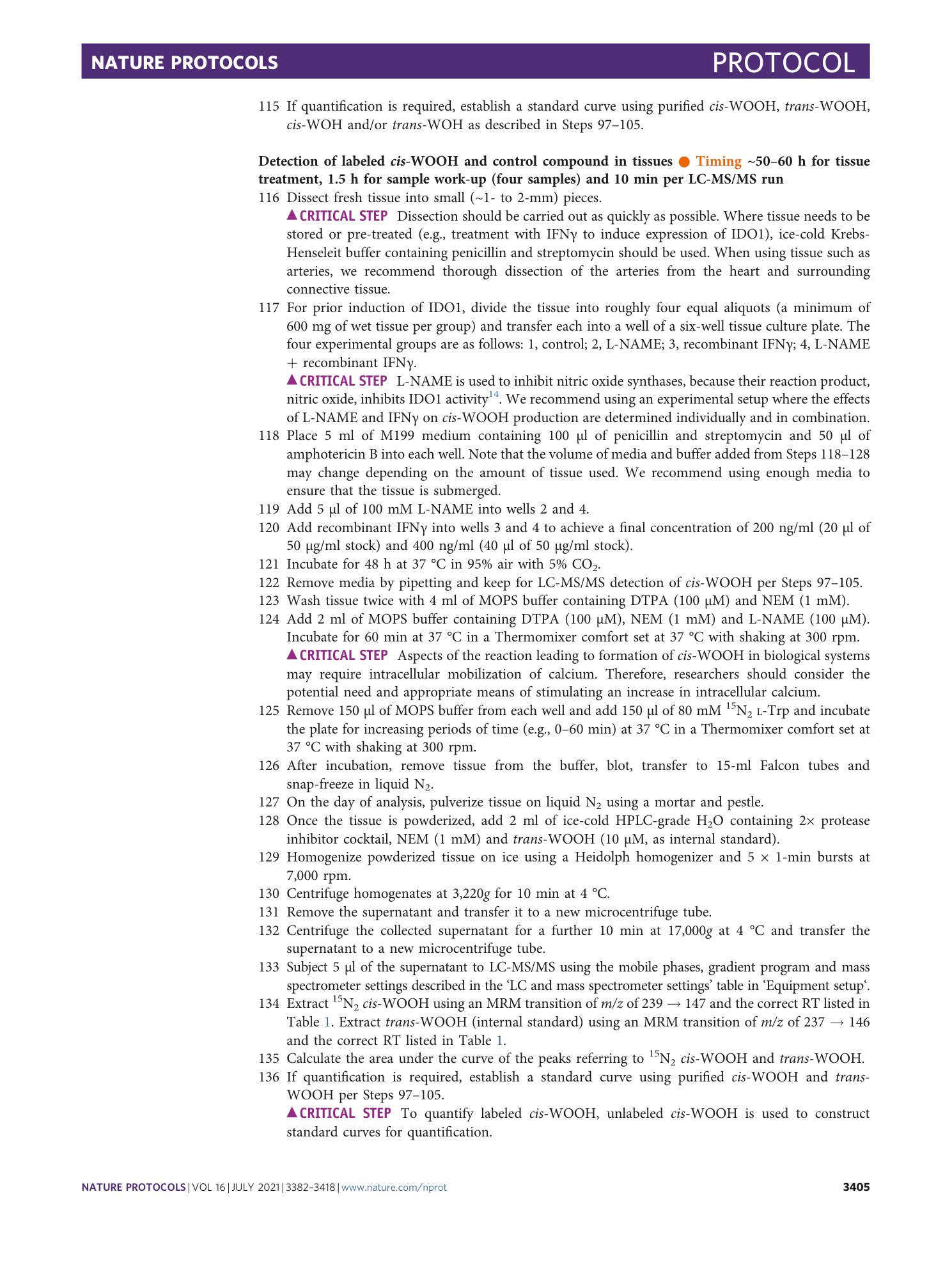
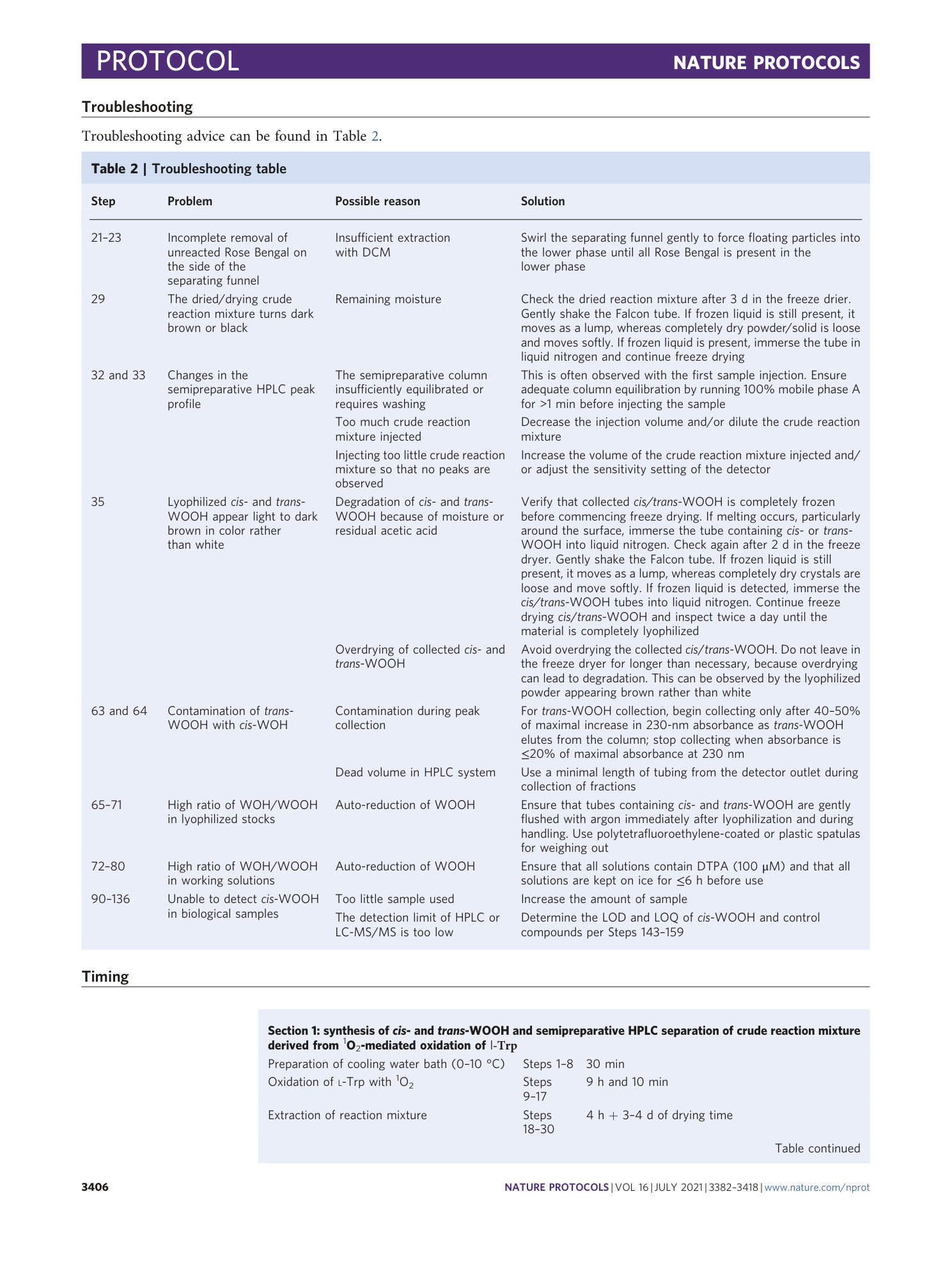
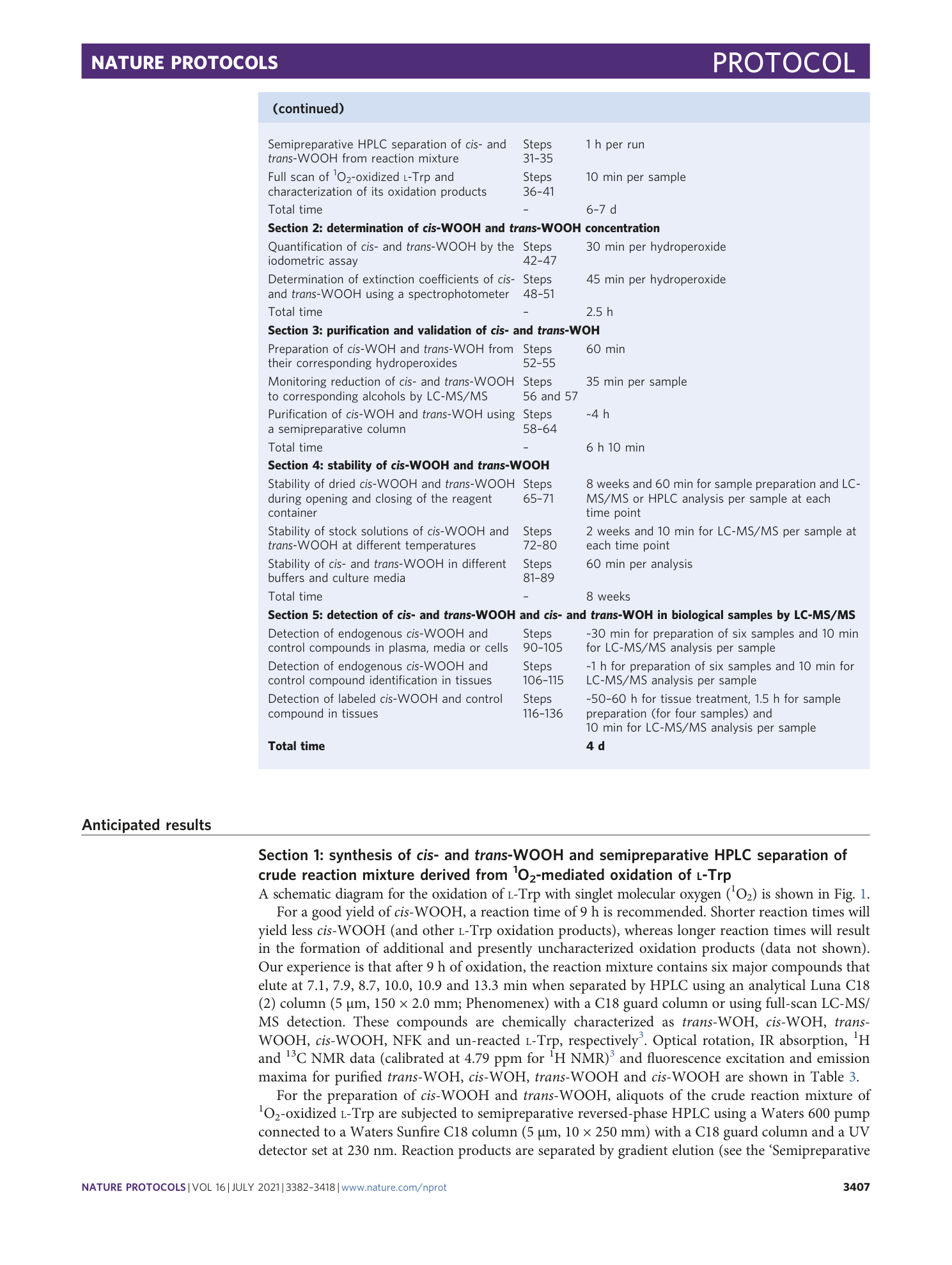
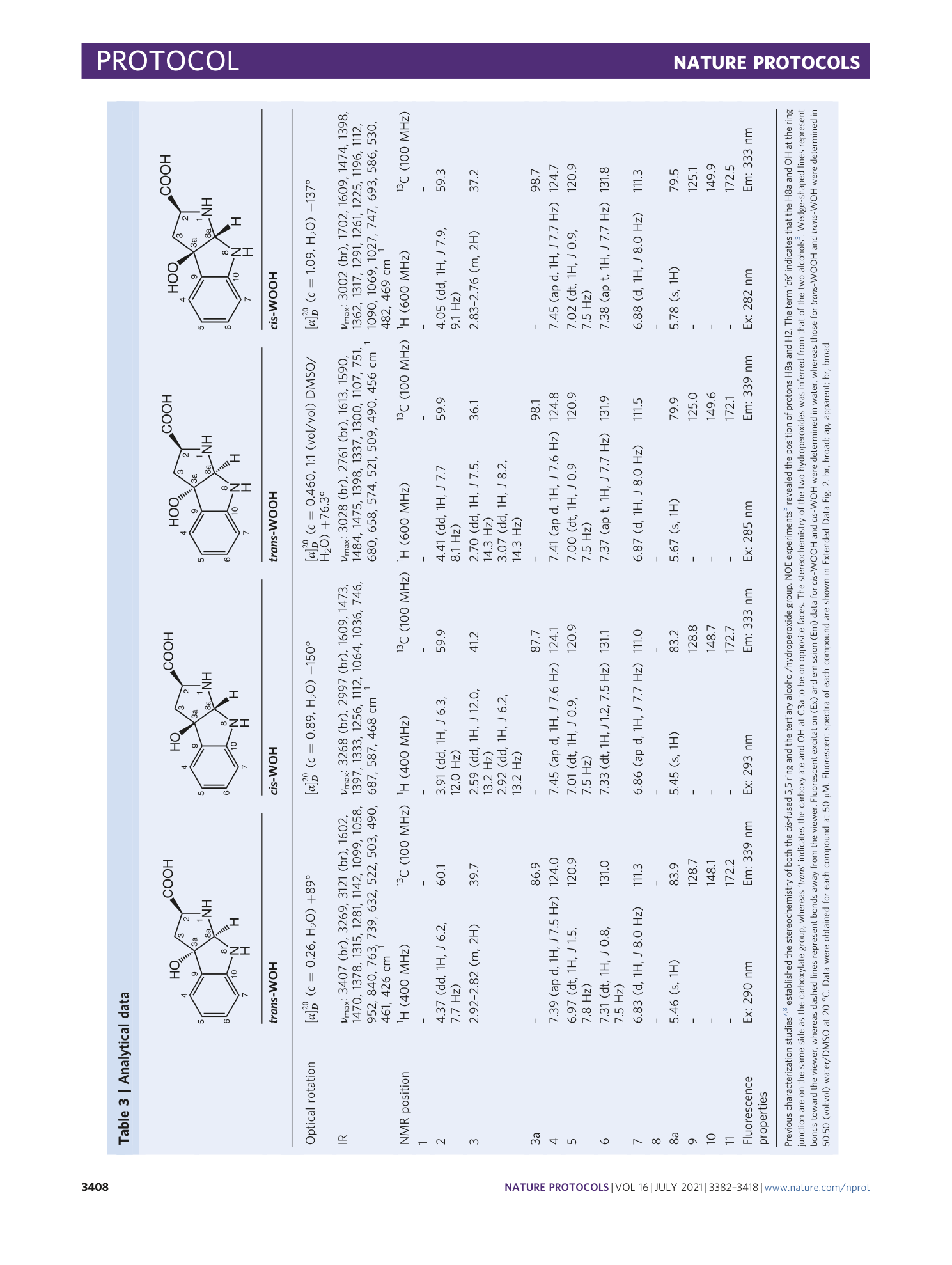
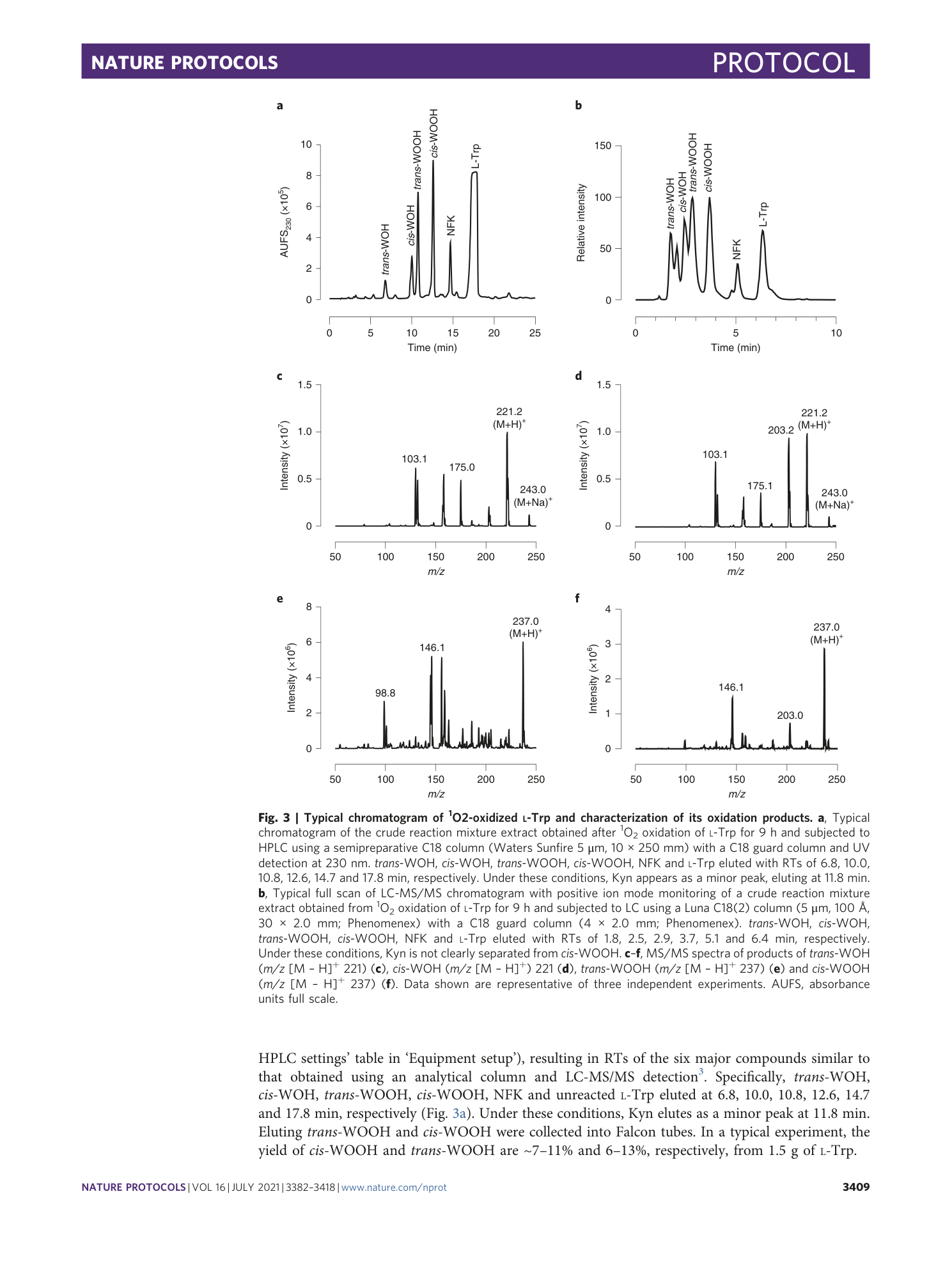
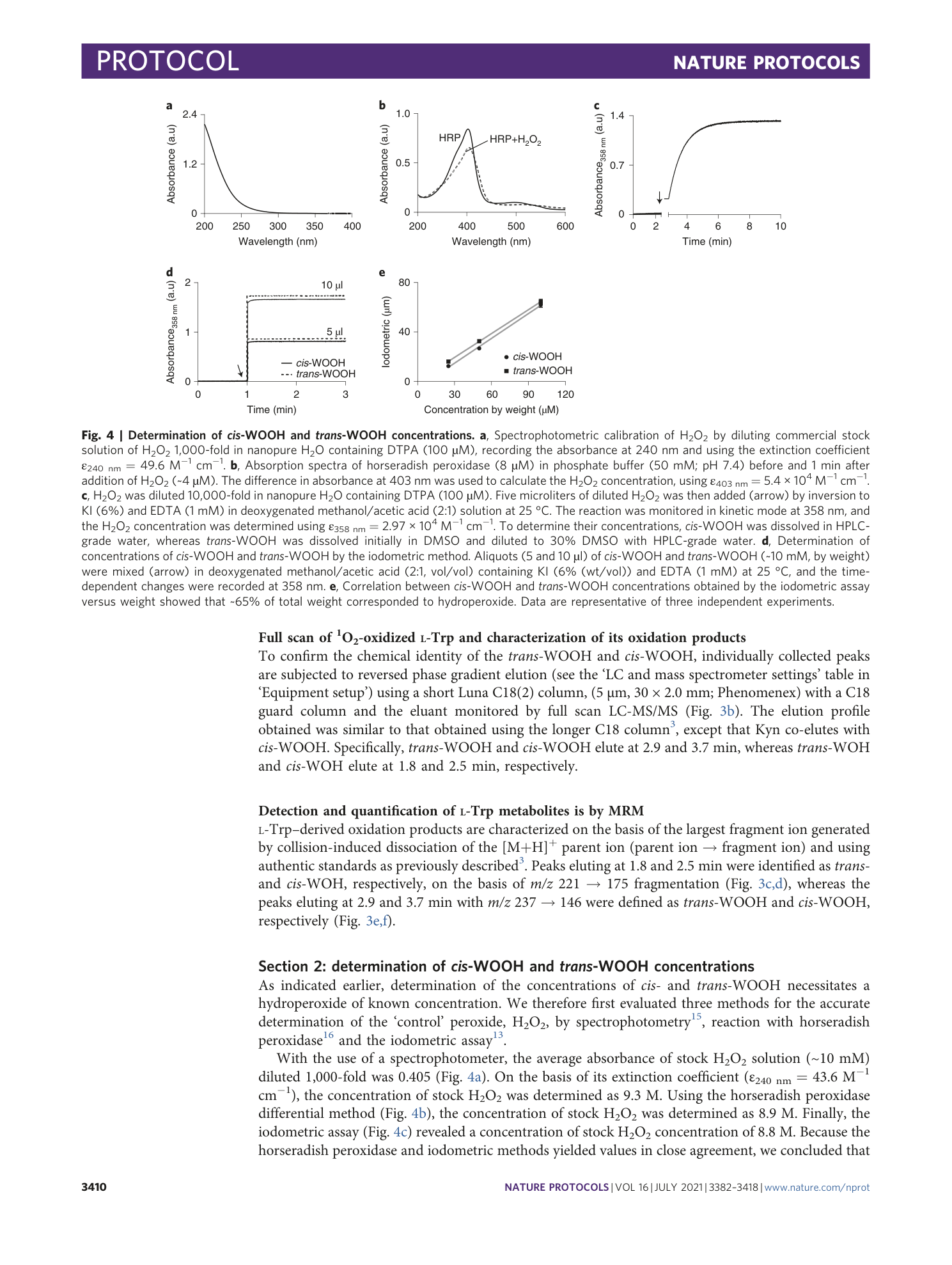
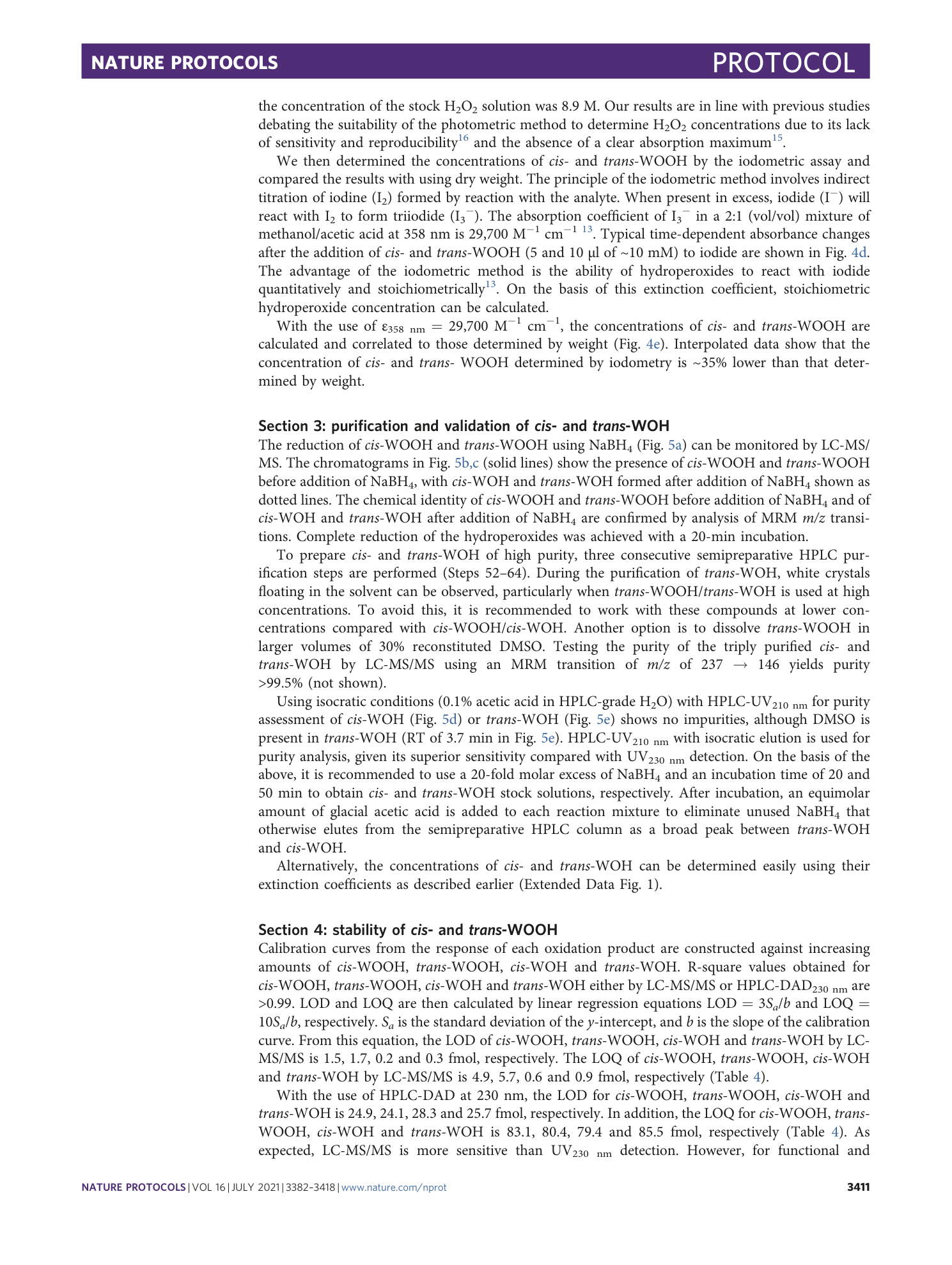
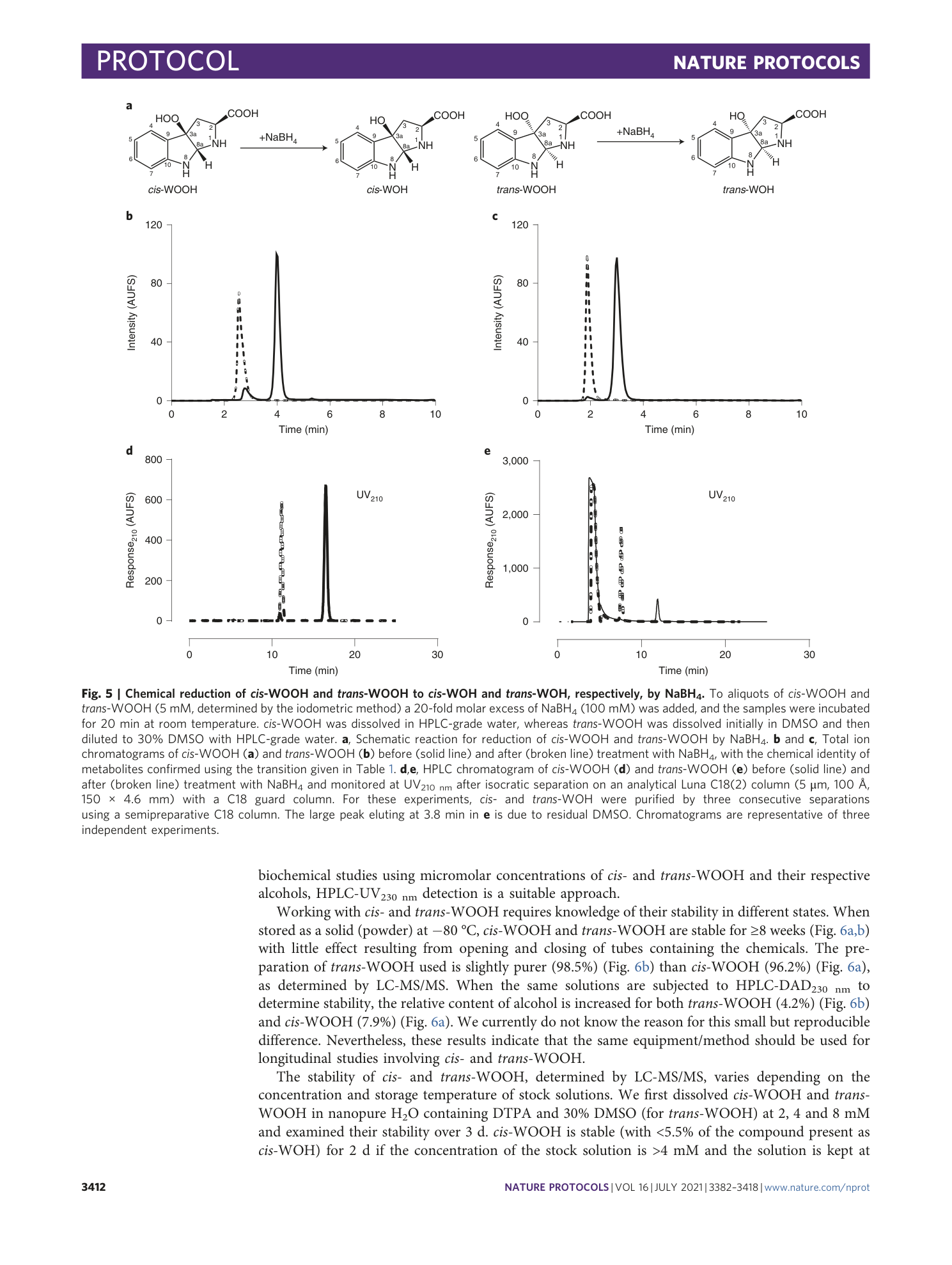
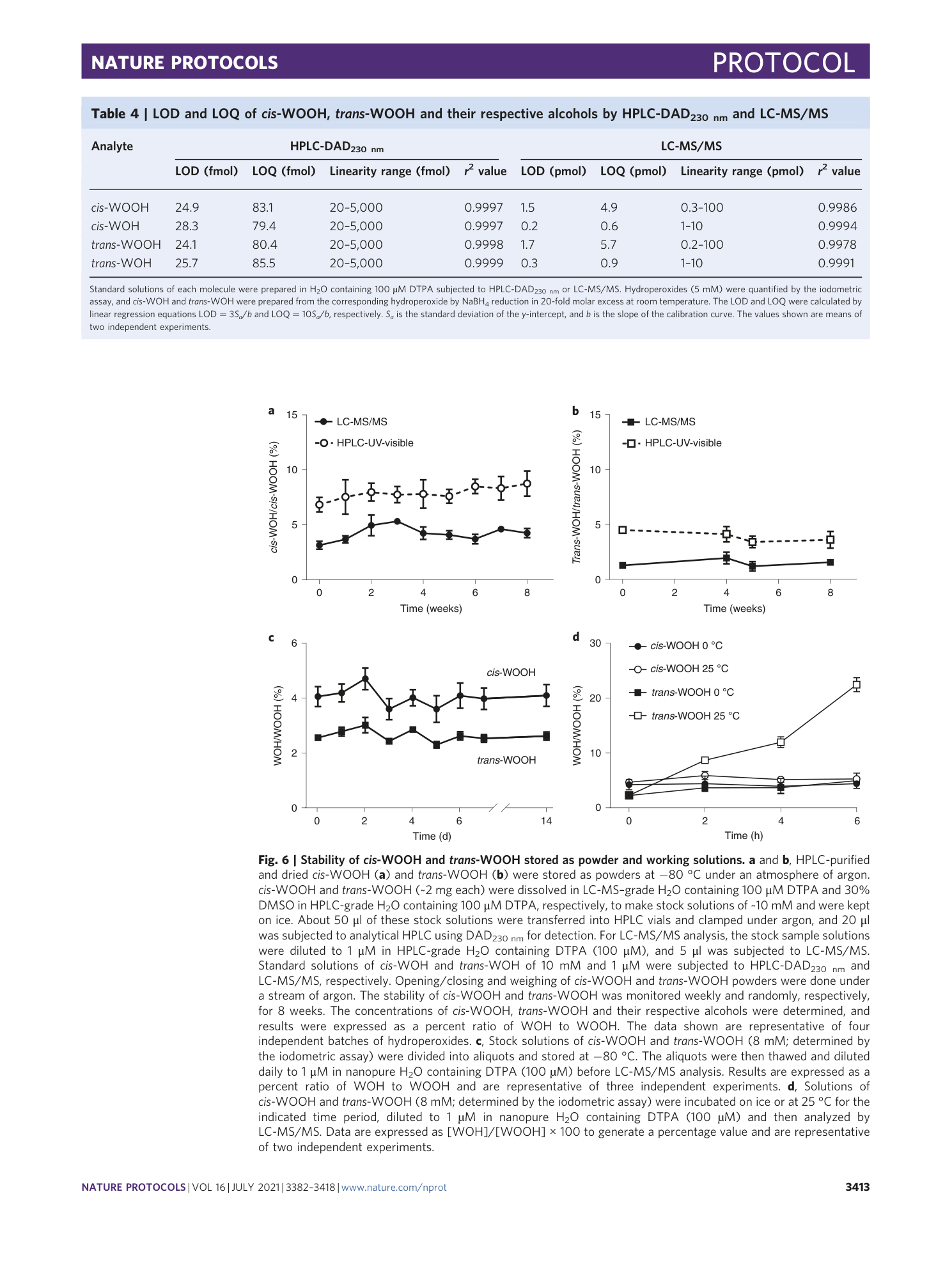

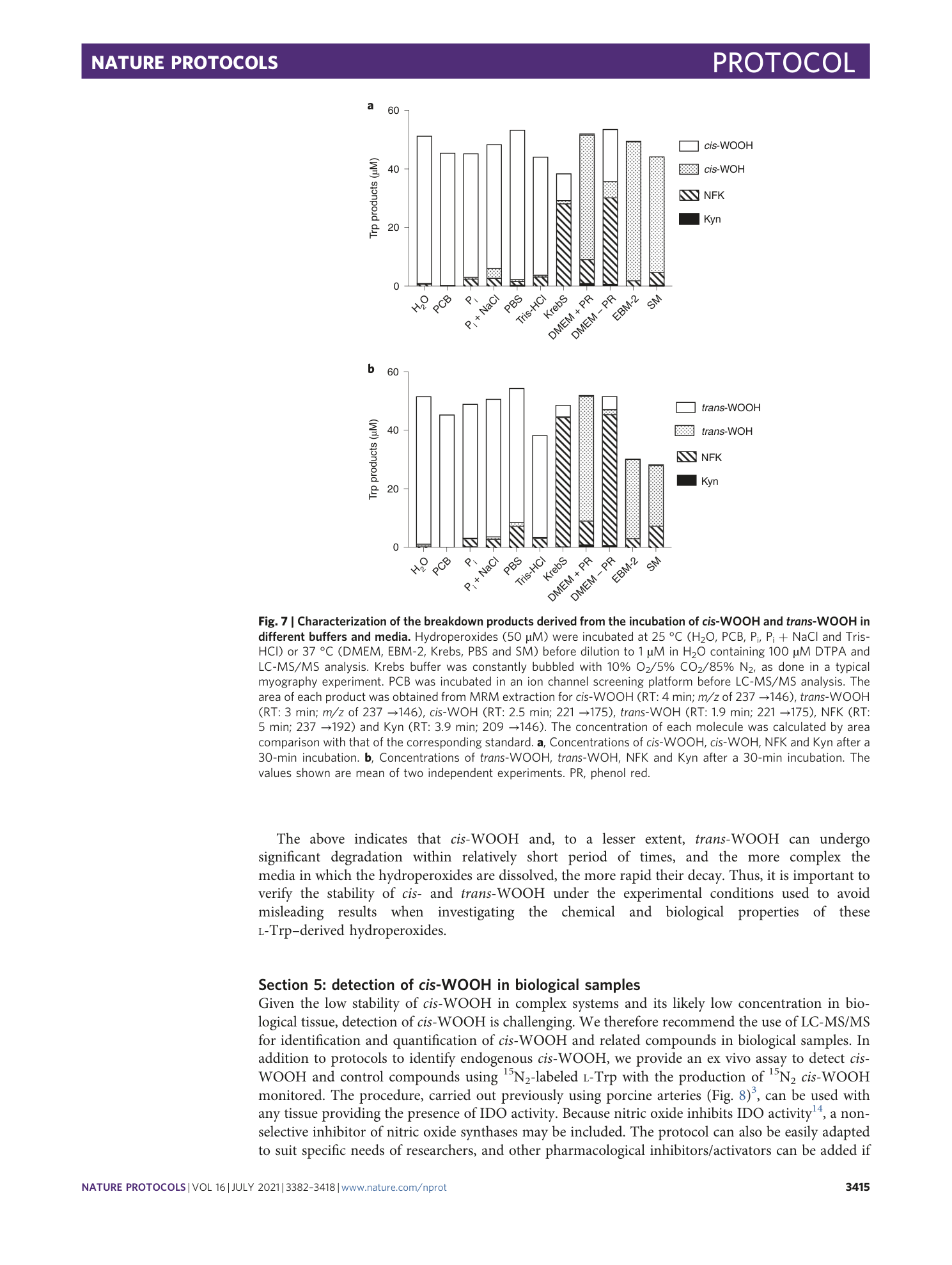
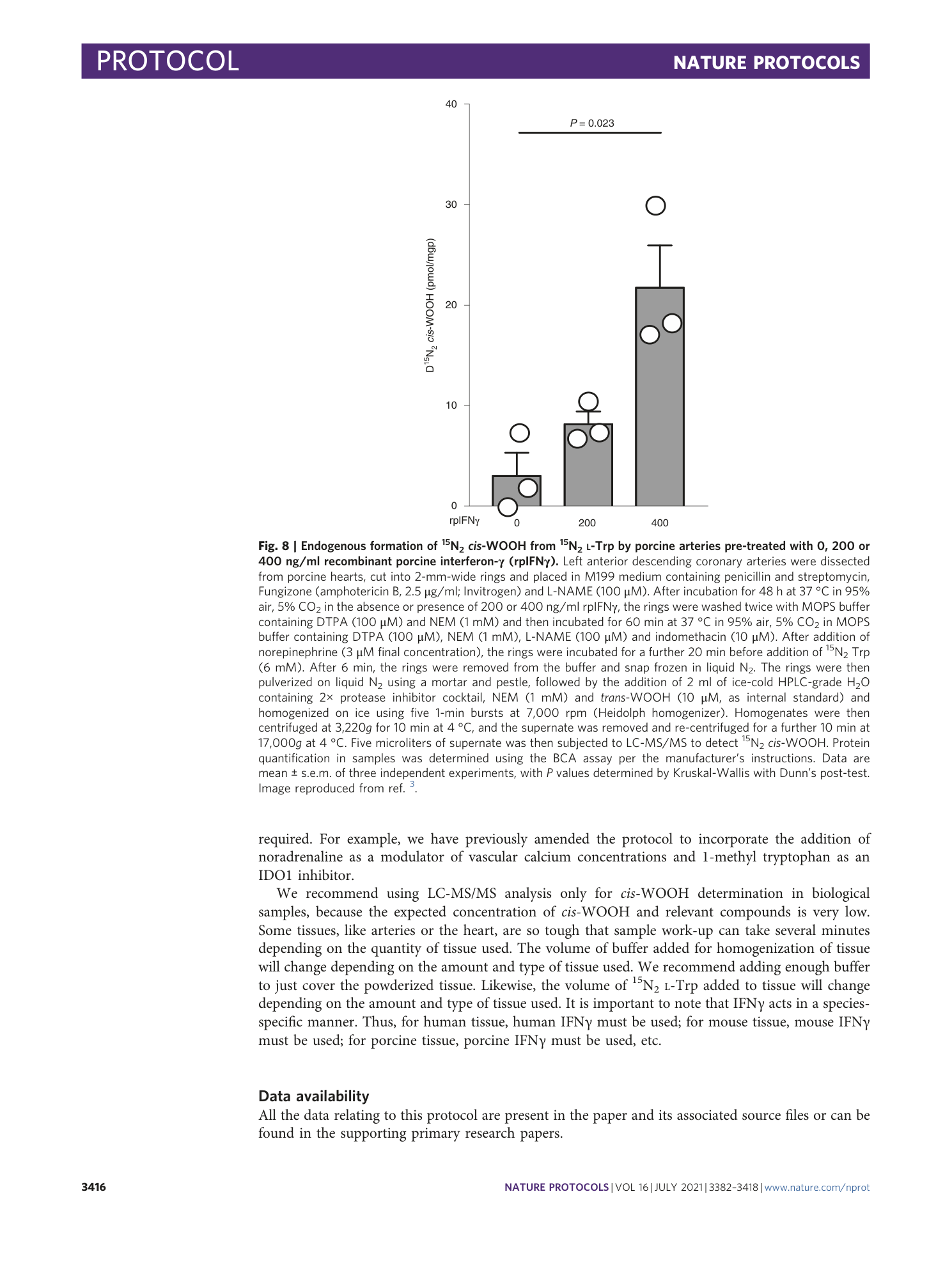
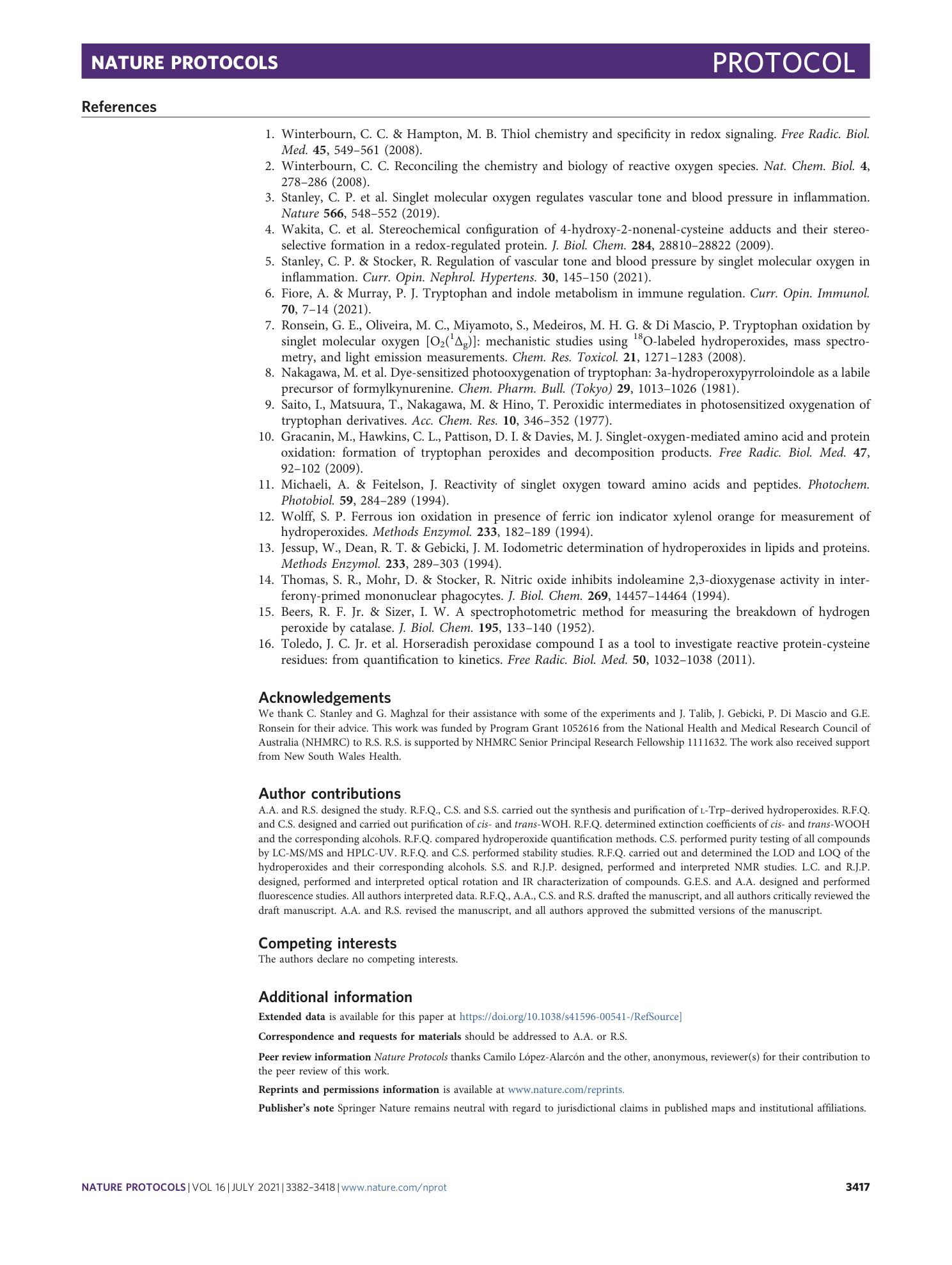


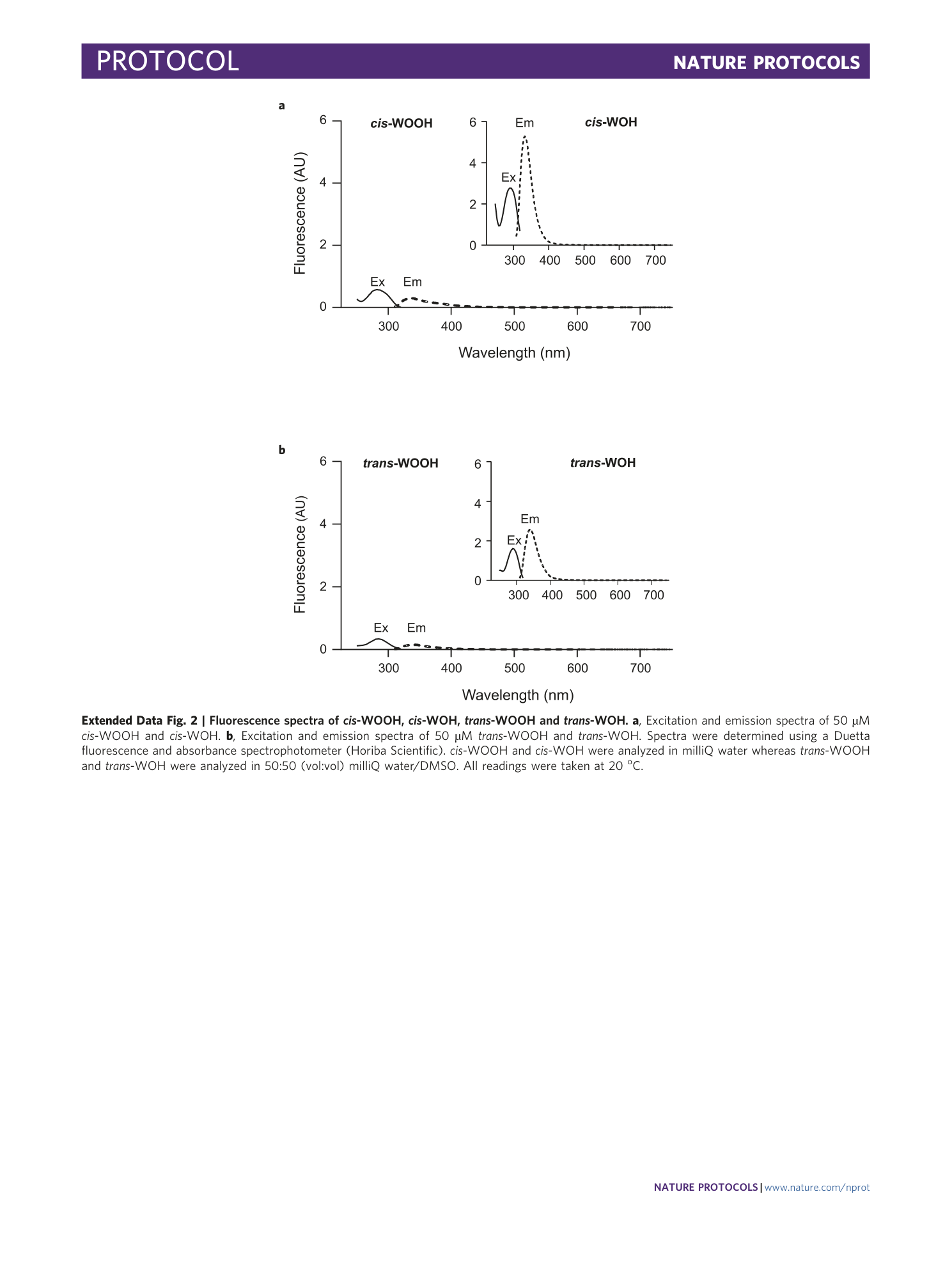
Extended
Extended Data Fig. 1 Correlation between absorbance and cis -WOH and trans -WOH concentrations in nanopure H 2 O containing DTPA (100 µM).
Aliquots of cis -WOOH and trans -WOOH (5 mM; determined by the iodometric method) were incubated with a 20-fold molar excess of NaBH 4 (100 mM) for 20 min at room temperature. cis -WOOH was dissolved in HPLC-grade water, whereas trans -WOOH was dissolved initially in DMSO and then diluted to 30% DMSO with nanopure grade H 2 O. The solutions were then diluted to 10, 25, 50, 100 and 250 µM in nanopure grade H 2 O before recording their spectra from 400 to 200 nm using a spectrophotometer. Absorbance was plotted against cis - or trans -WOH concentration, and their respective molar extinction coefficients at 295 nm were obtained from the slope as ε = 2.76 ± 0.05 × 10 3 and ε = 2.23 ± 0.03 × 10 3 M –1 cm –1 . Data are mean ± s.e.m. and are representative of three independent experiments.
Extended Data Fig. 2 Fluorescence spectra of cis -WOOH, cis -WOH, trans -WOOH and trans -WOH.
a , Excitation and emission spectra of 50 µM cis -WOOH and cis -WOH. b , Excitation and emission spectra of 50 µM trans -WOOH and trans -WOH. Spectra were determined using a Duetta fluorescence and absorbance spectrophotometer (Horiba Scientific). cis -WOOH and cis -WOH were analyzed in milliQ water whereas trans -WOOH and trans -WOH were analyzed in 50:50 (vol:vol) milliQ water/DMSO. All readings were taken at 20 o C.

